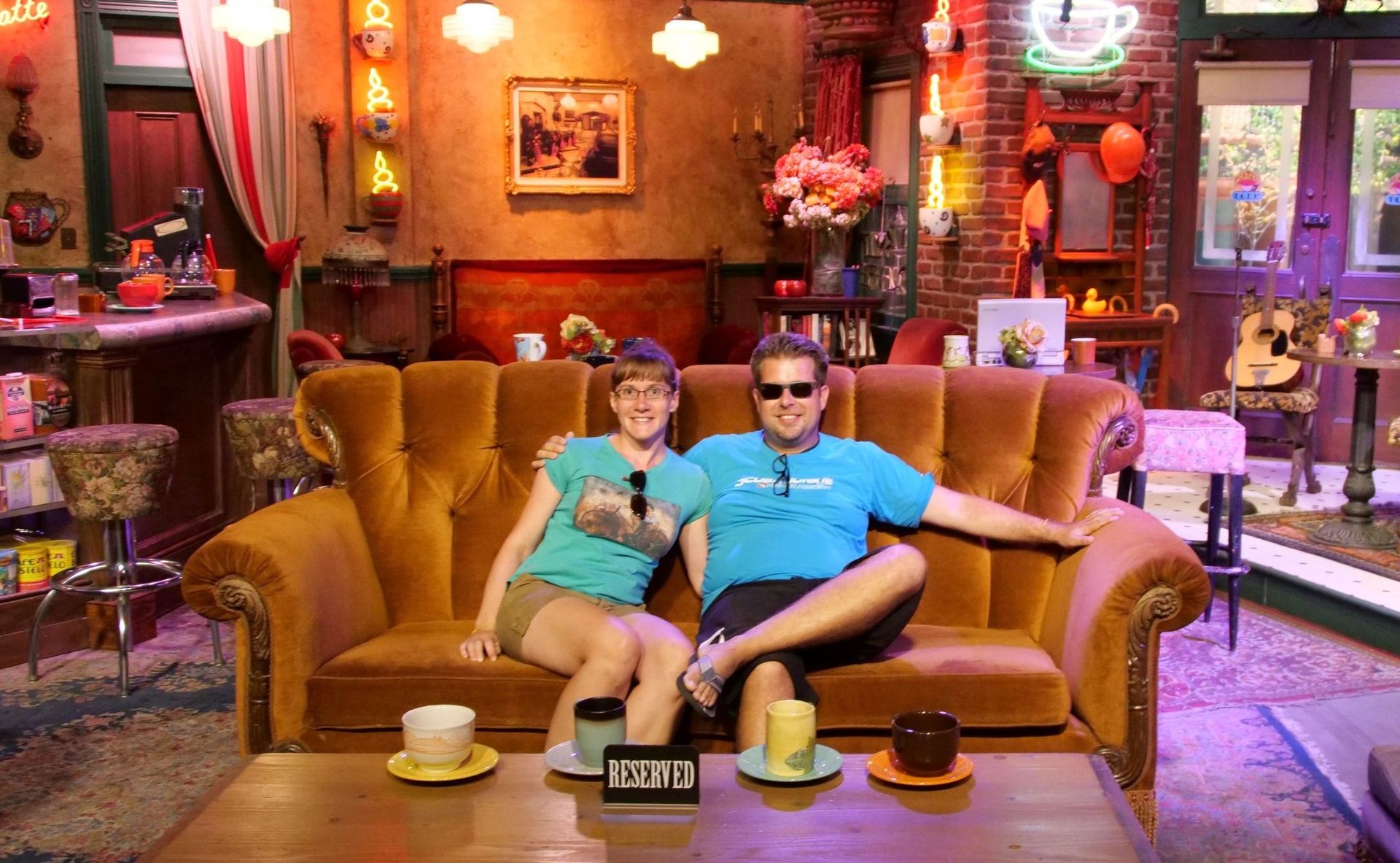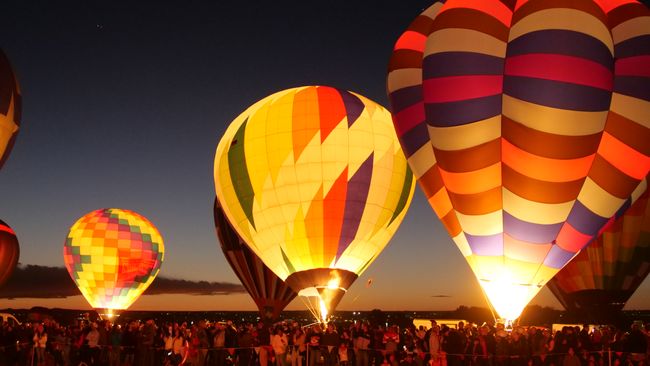
anne & ben um die welt
vakantio.de/anne_und_ben_um_die_welt
15/08/2022 to 16/08/2022 - Stage 10 from Ohrid / North Macedonia to Kalambaka / Greece (260 kilometers)
प्रकाशित भइल बा: 18.08.2022
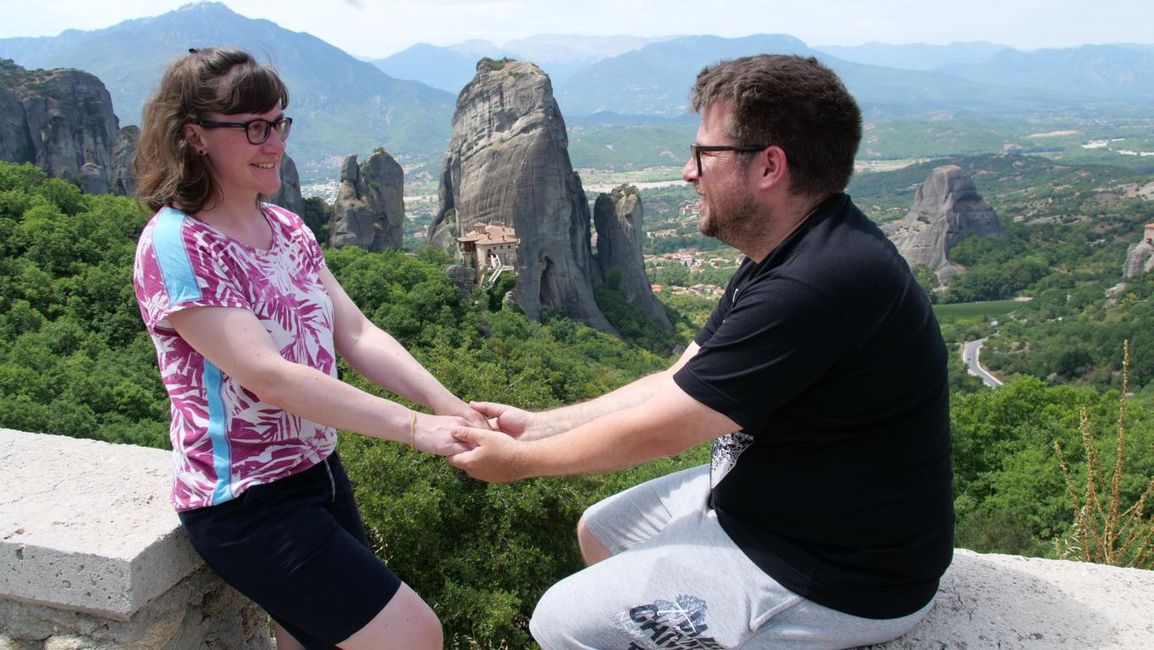
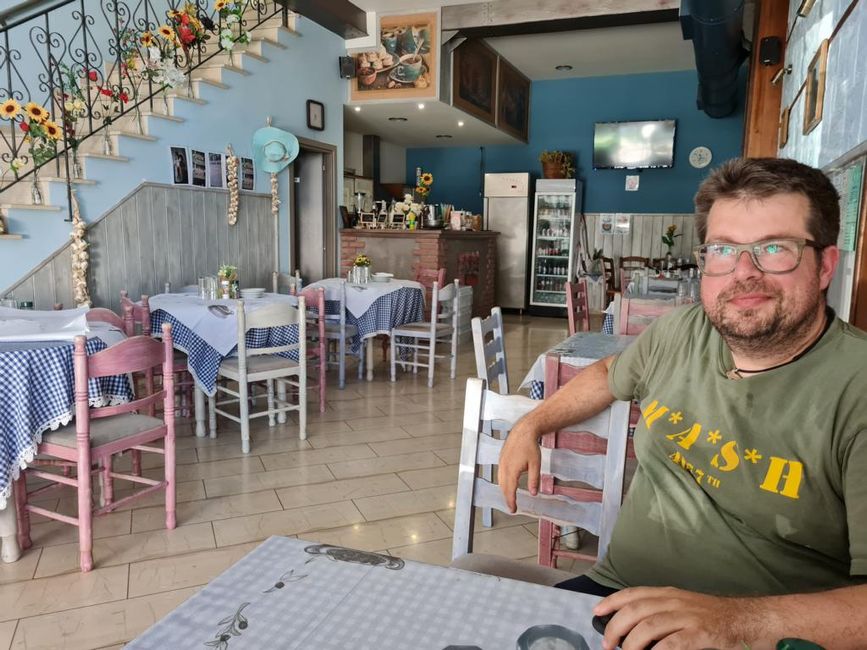

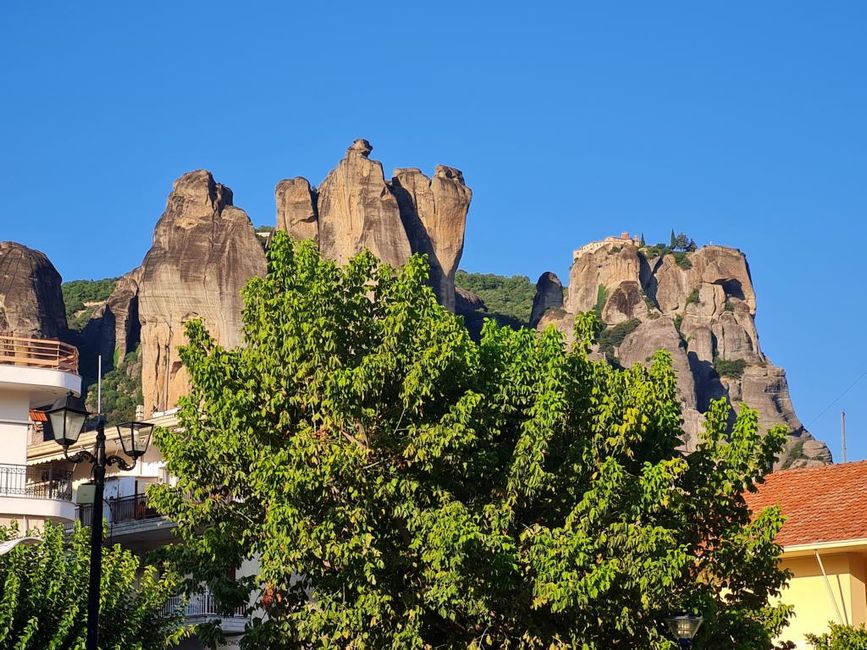
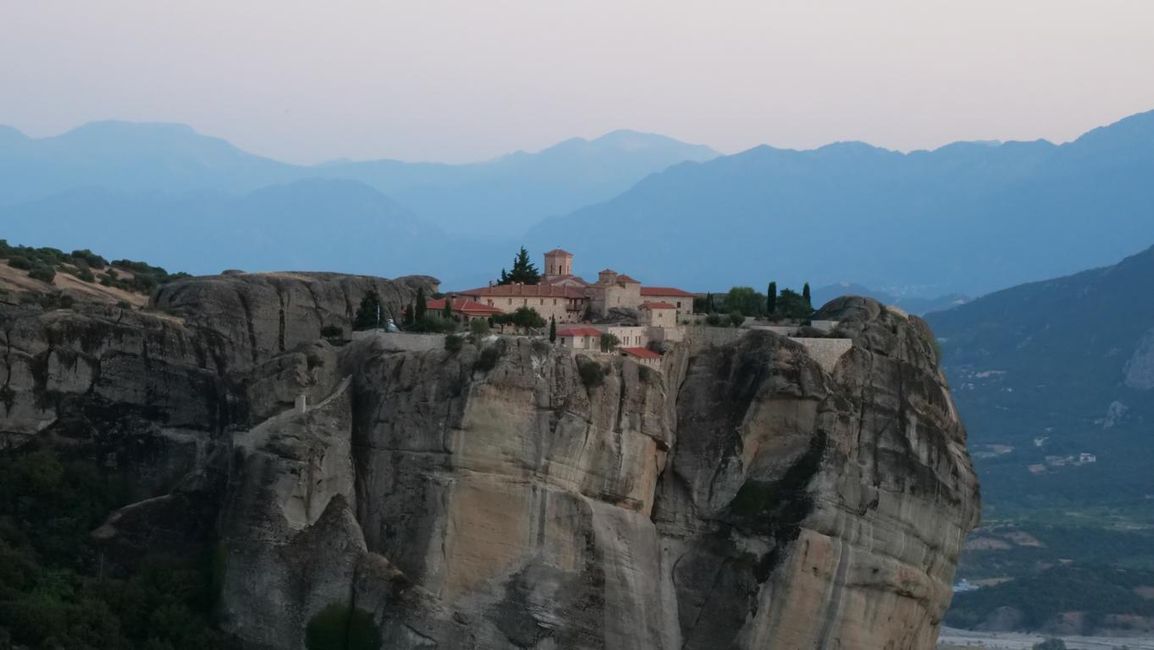
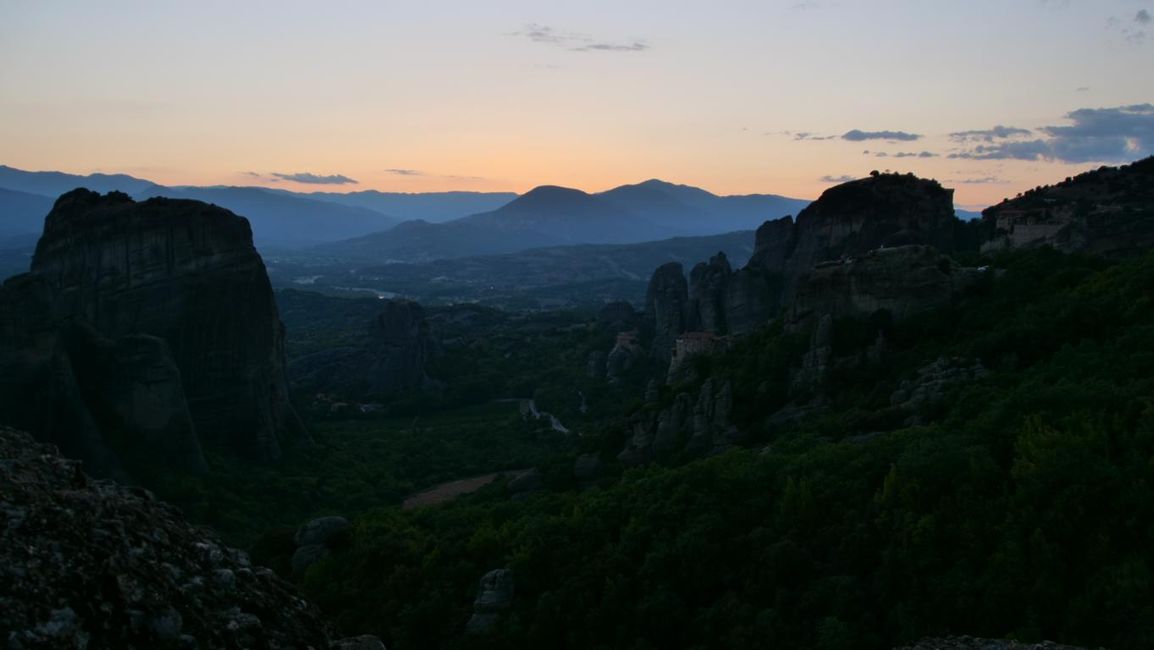
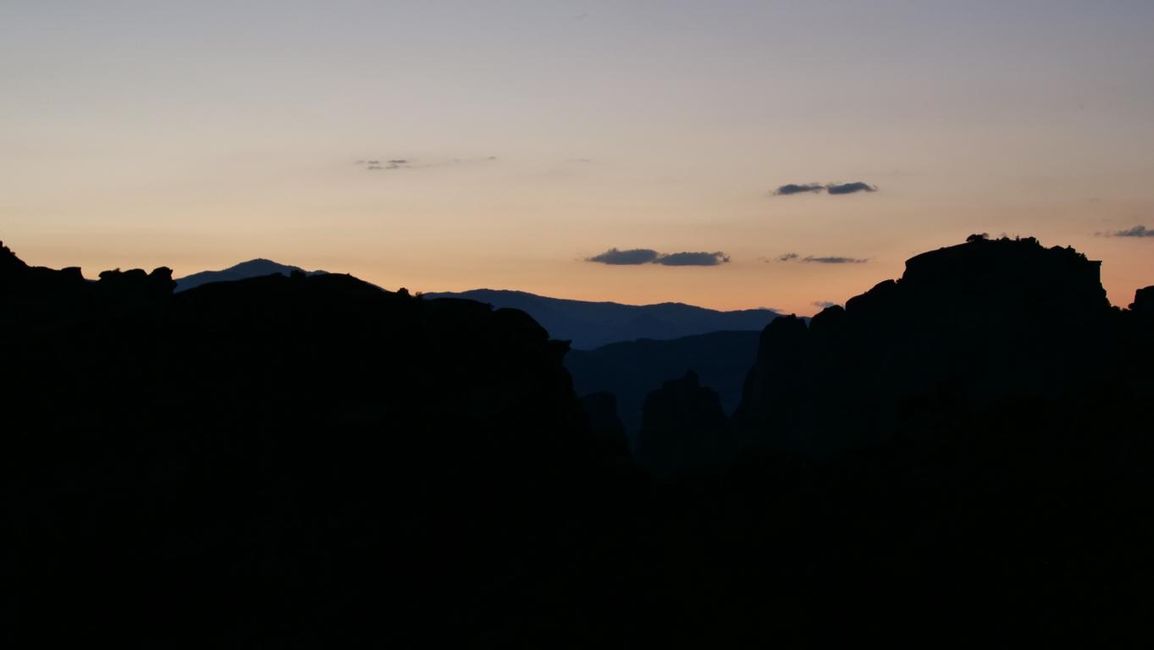
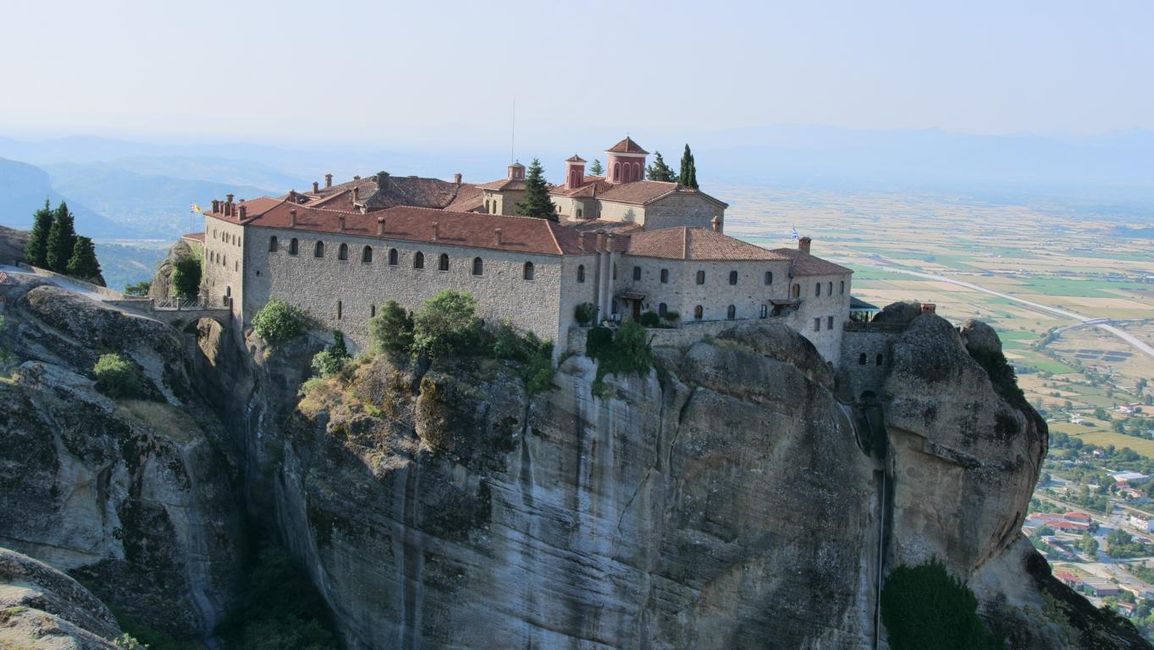
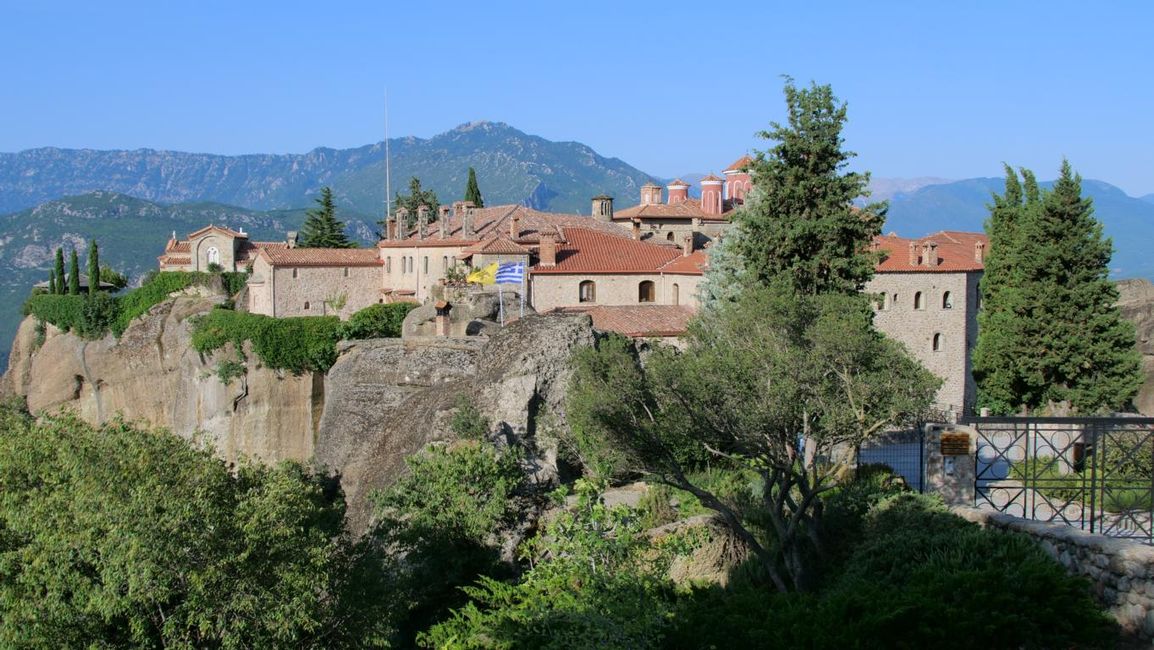
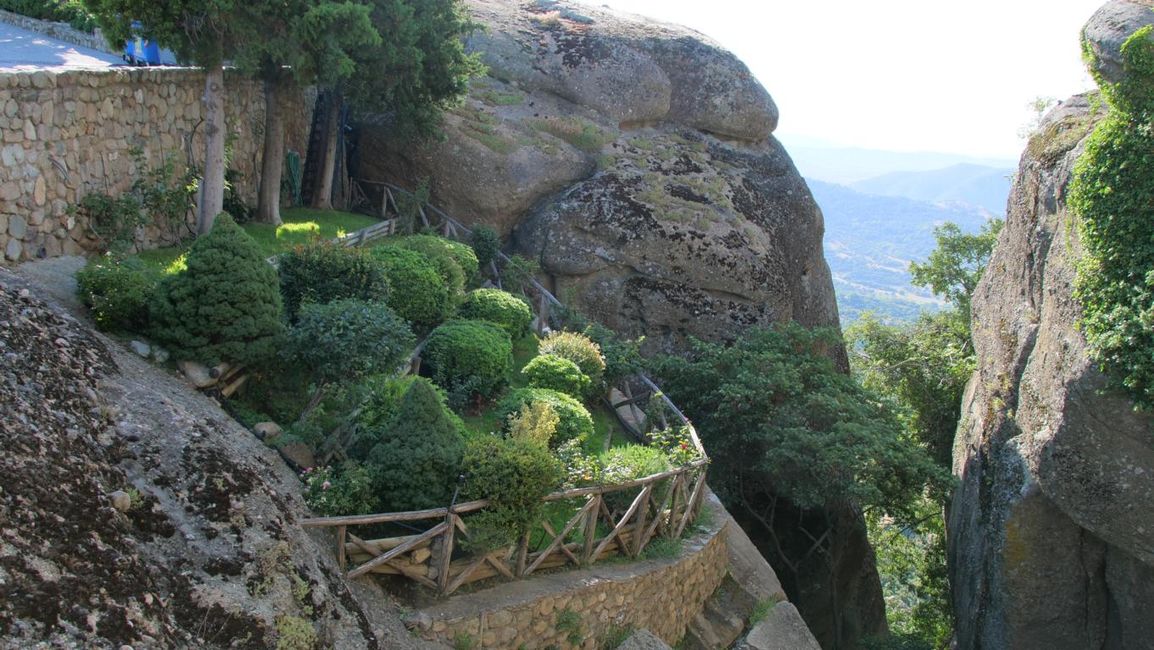
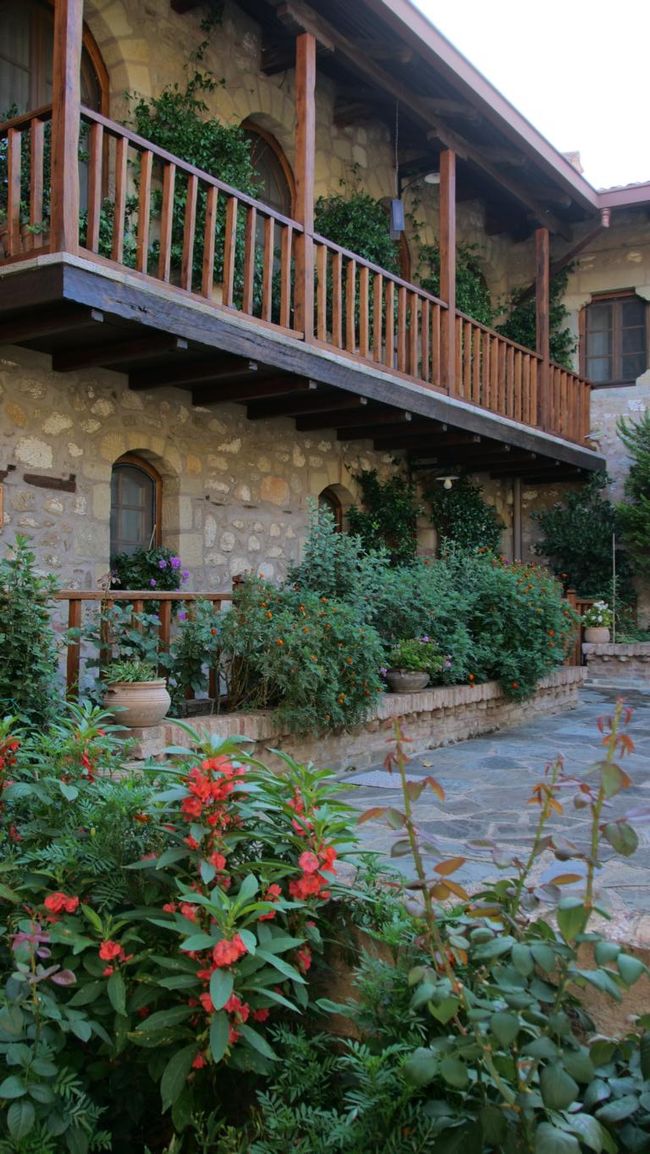
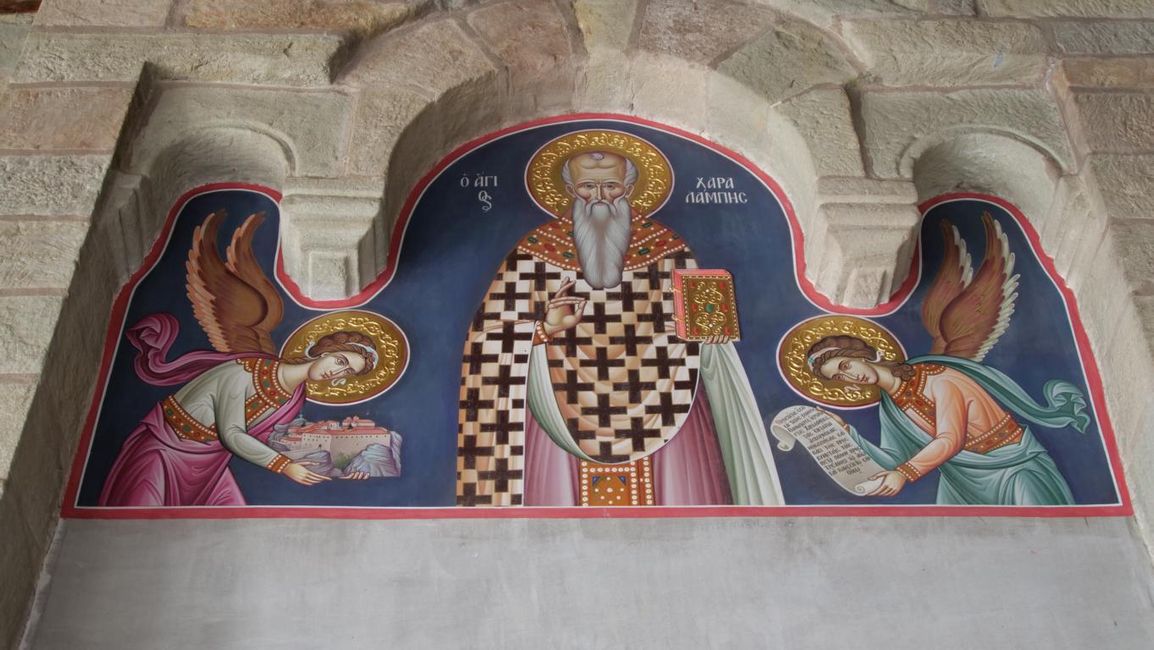
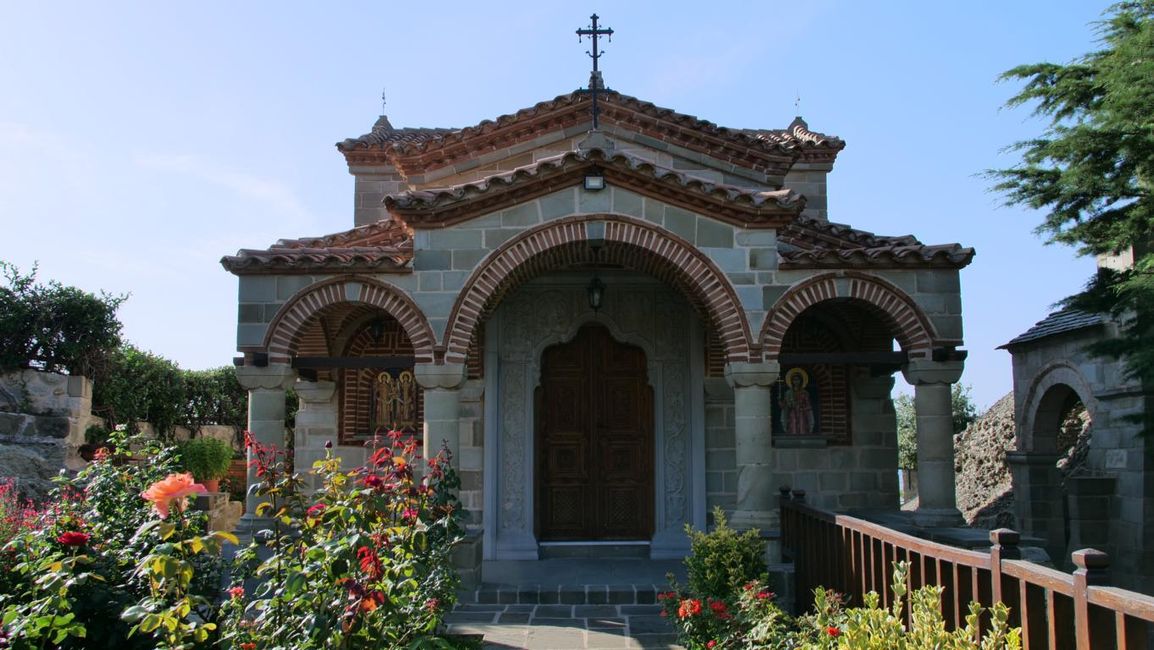
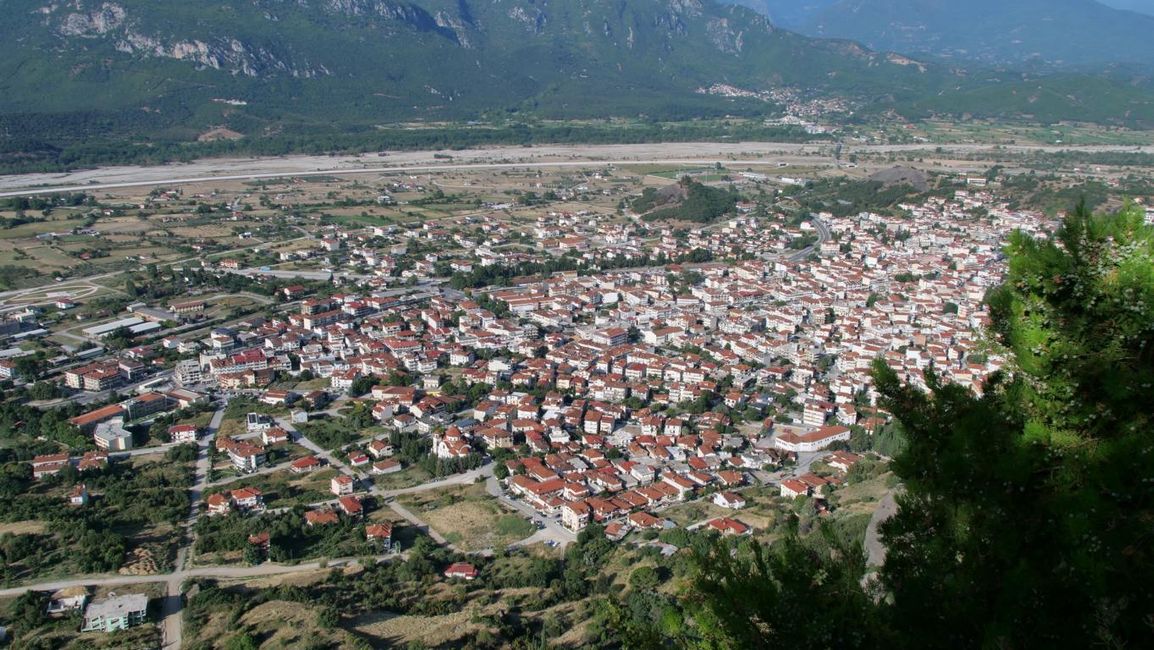
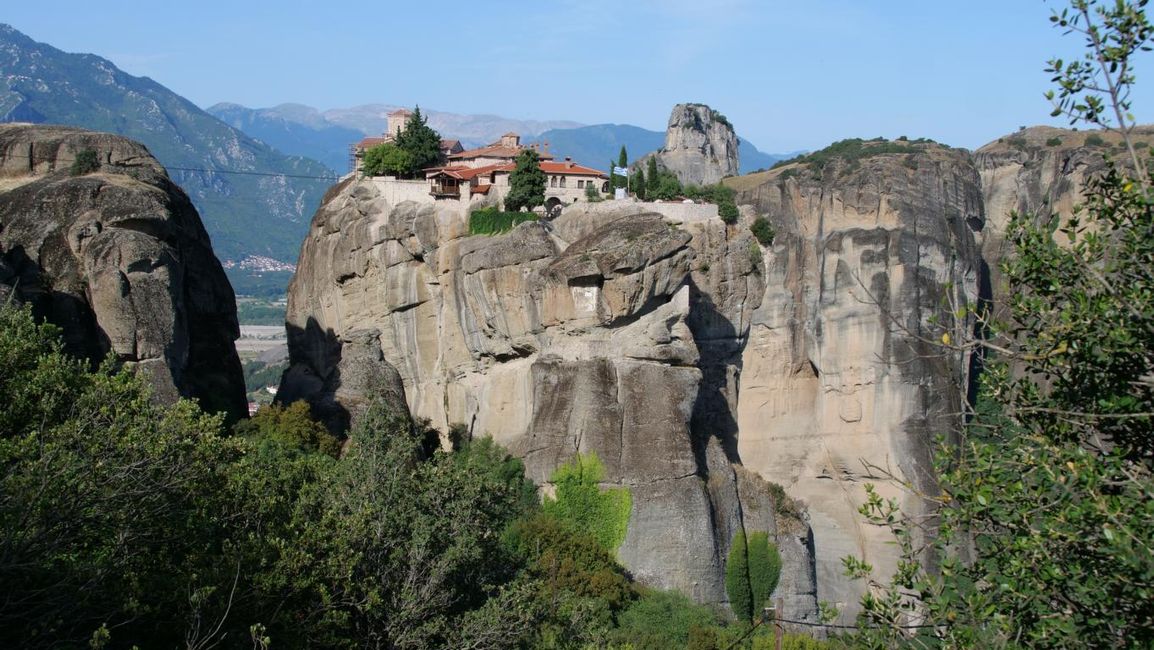
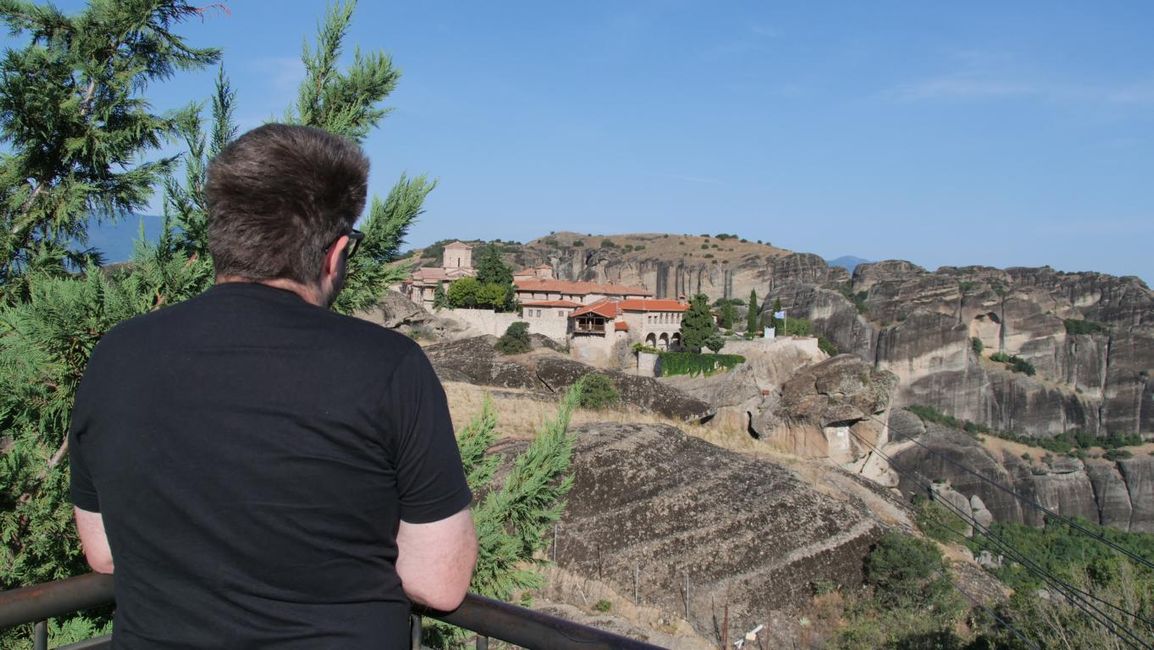
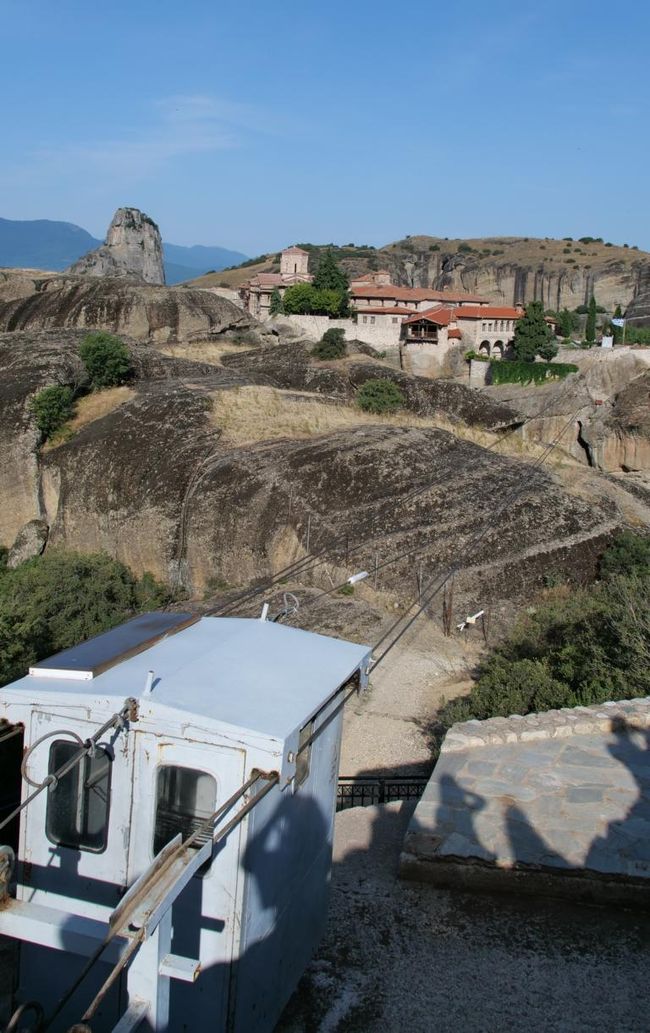
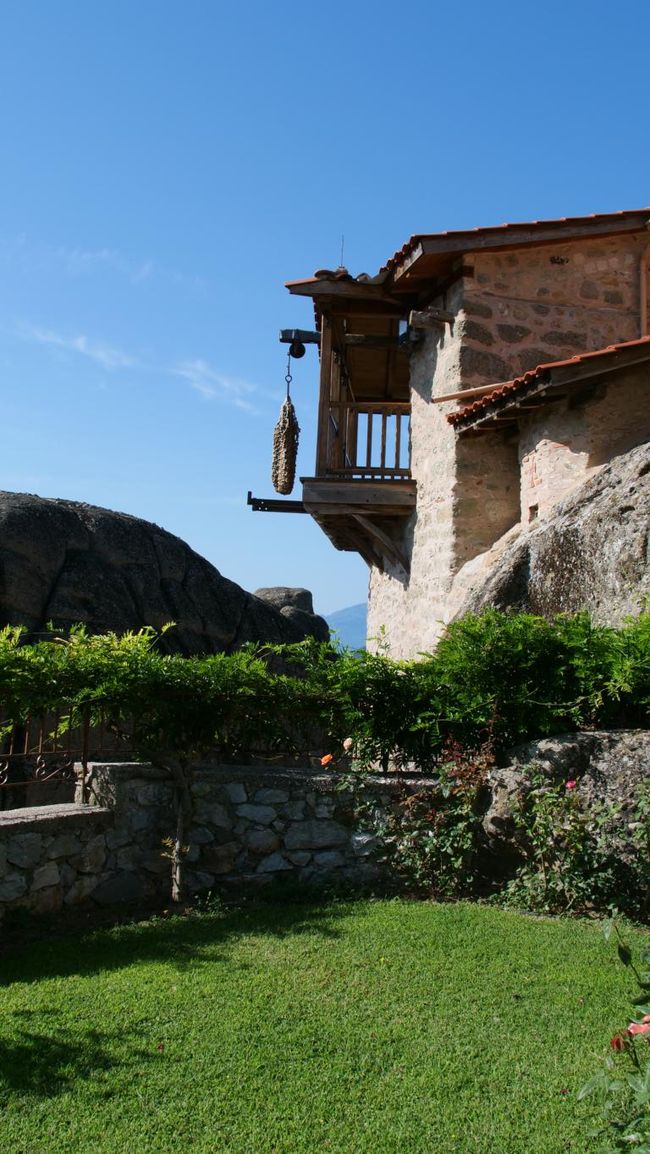
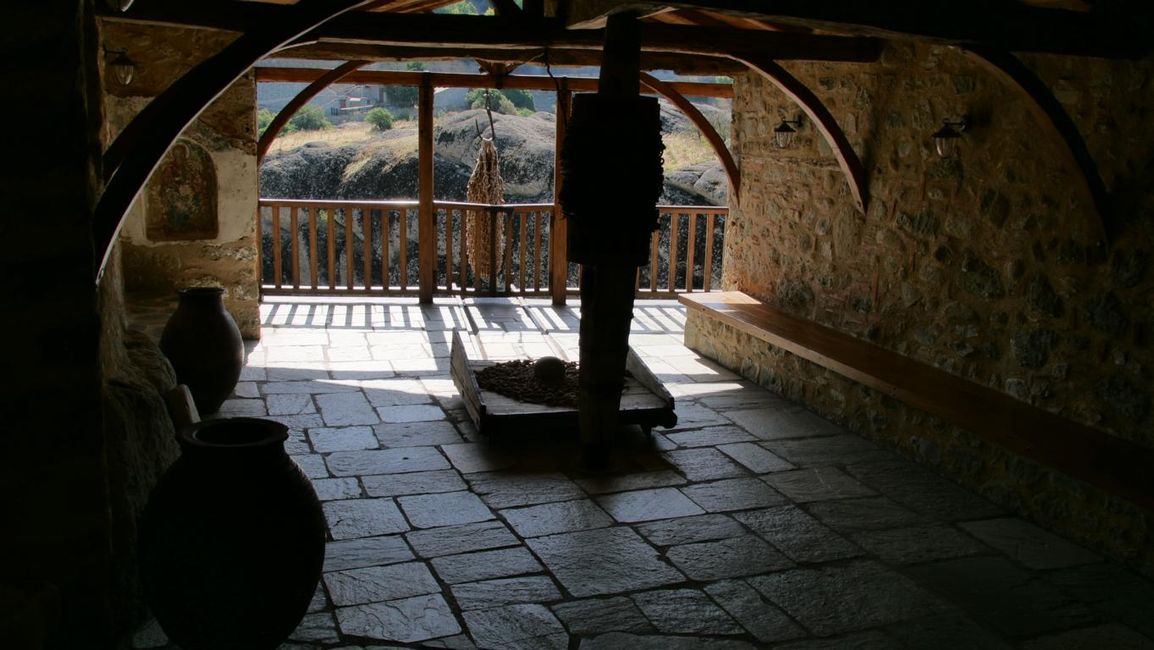
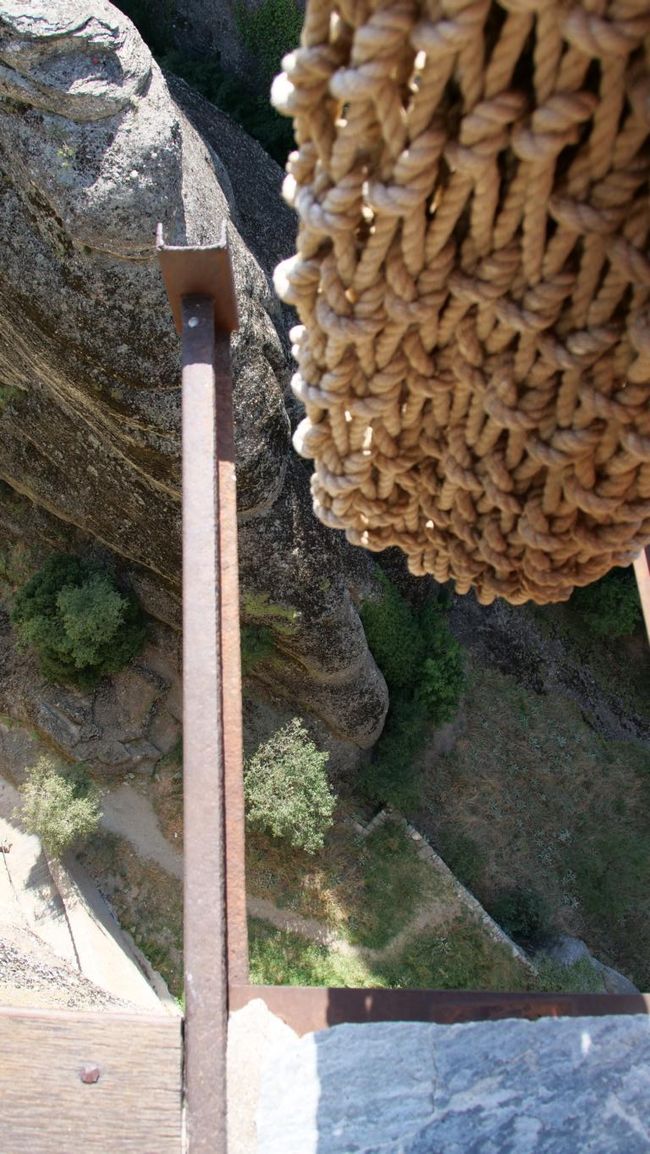
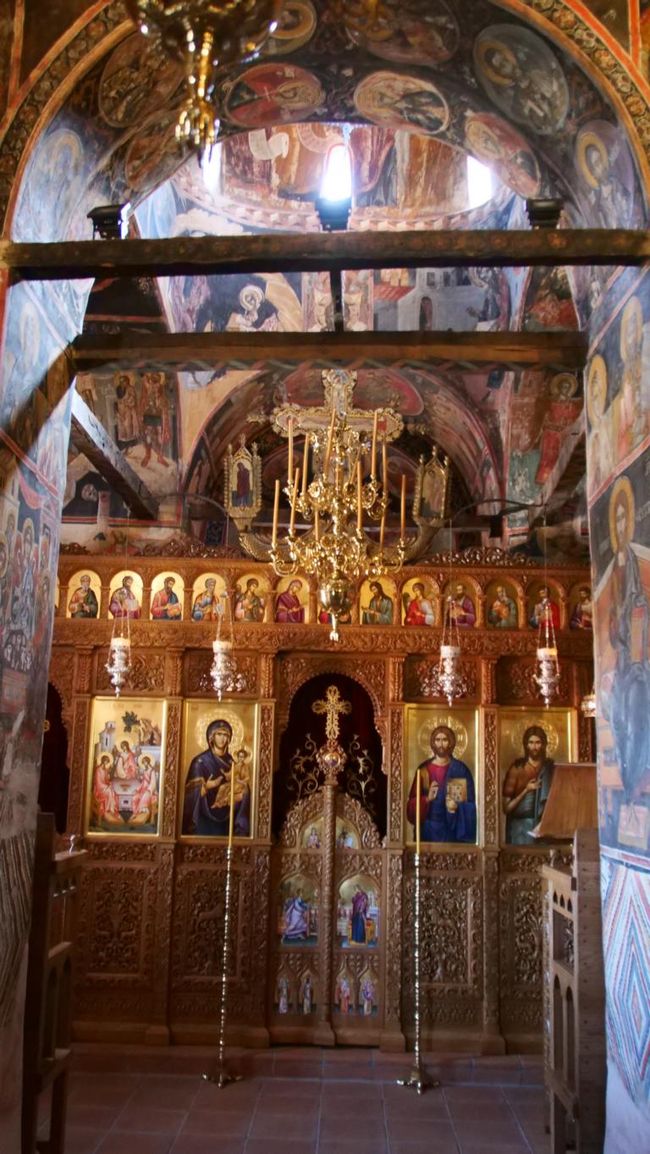
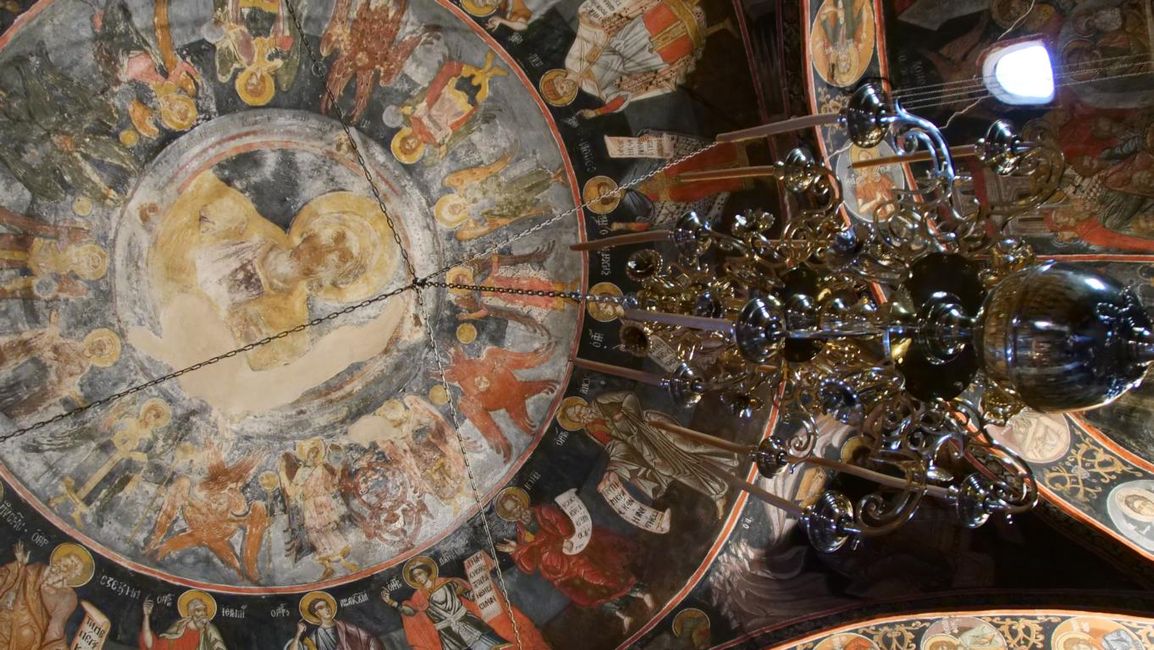
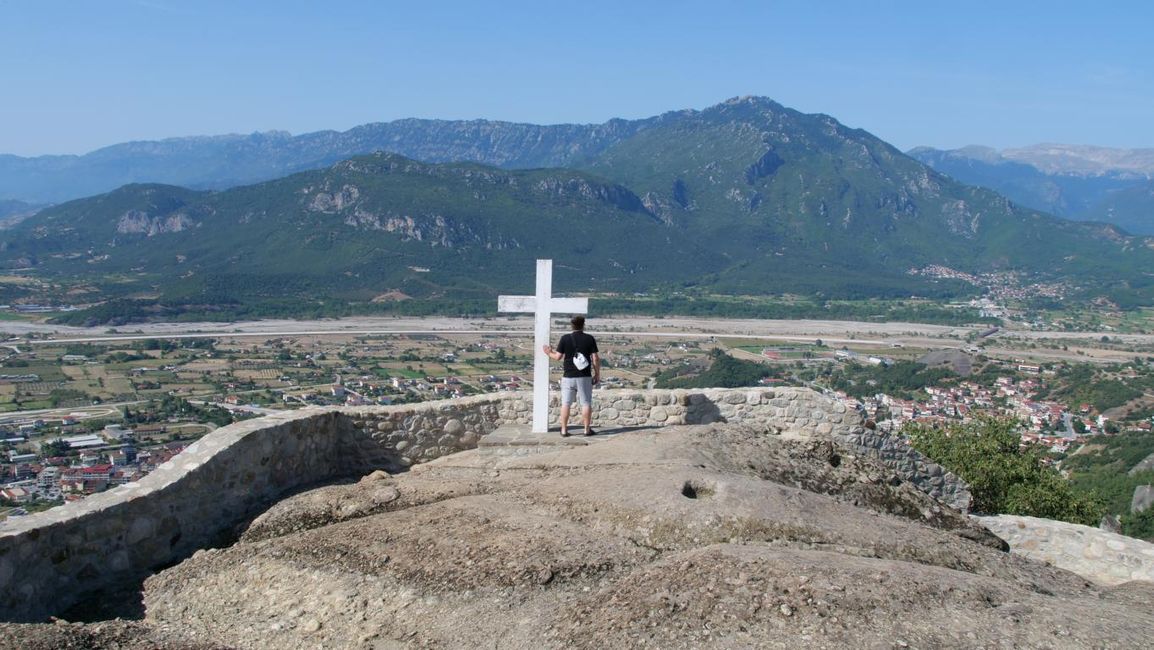
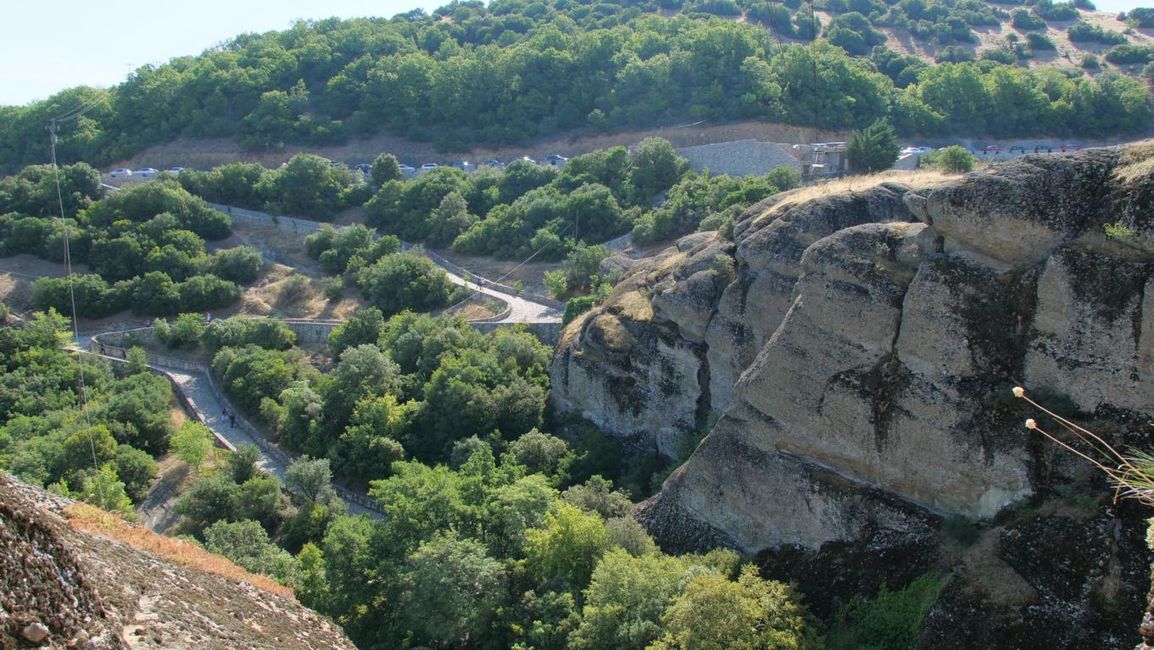
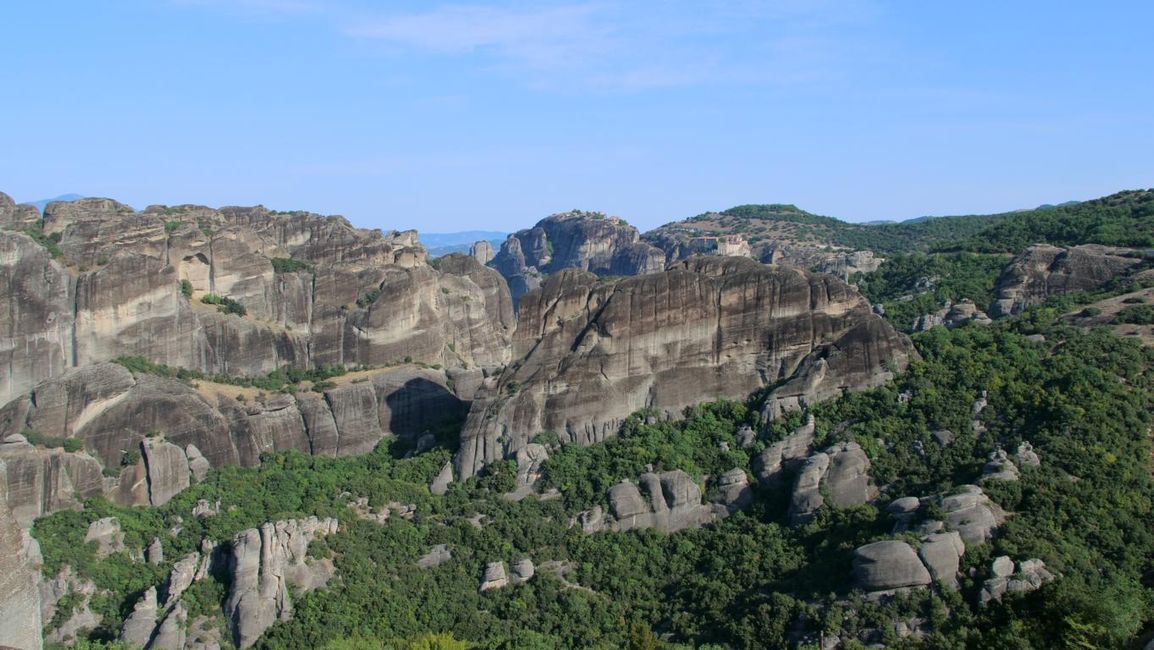
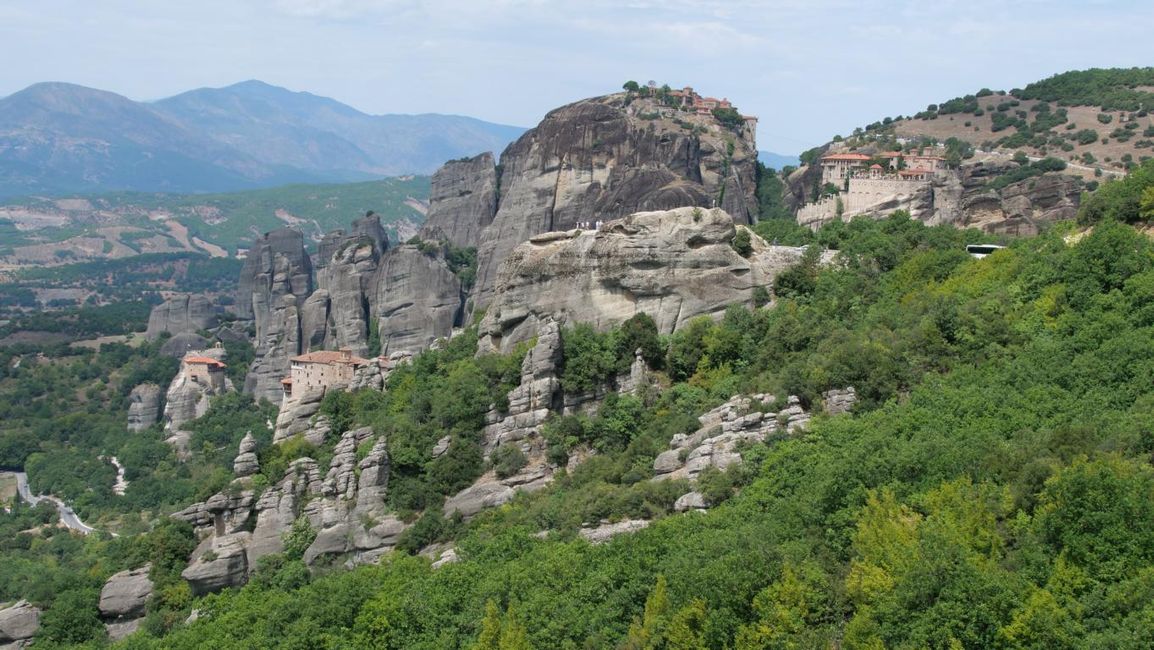
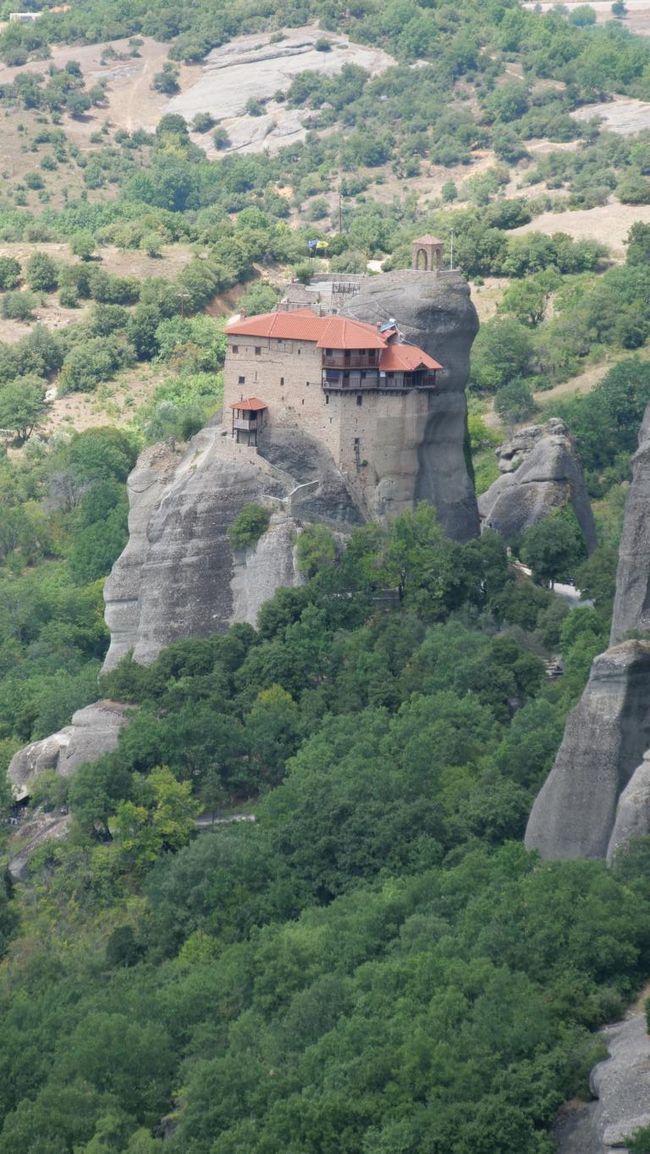
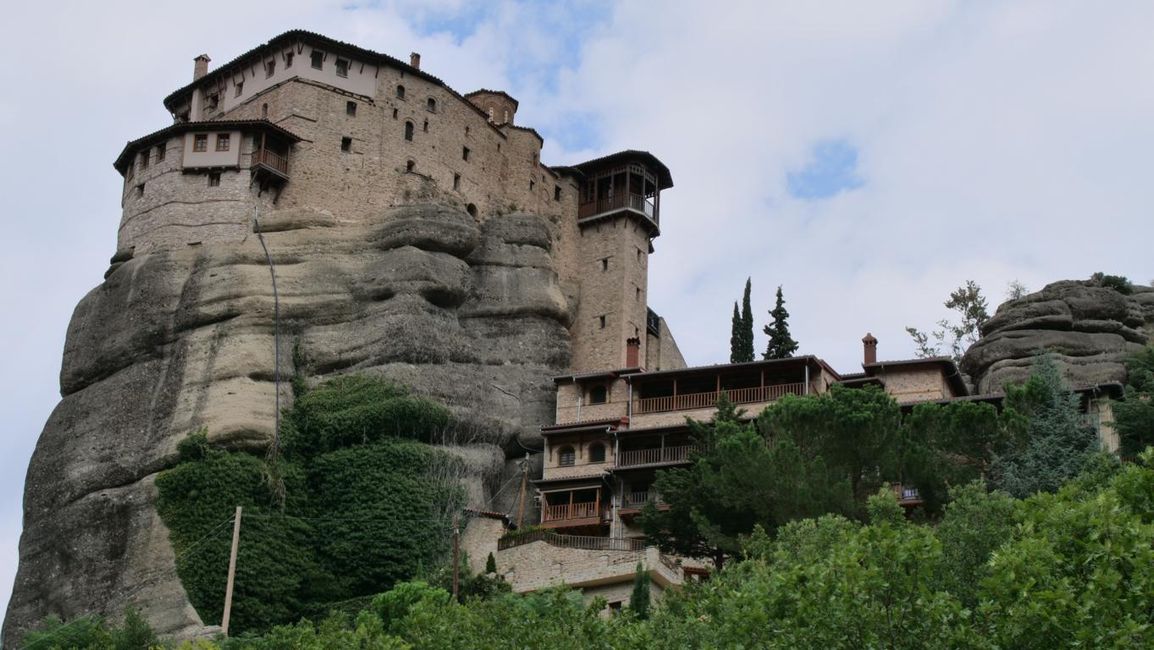
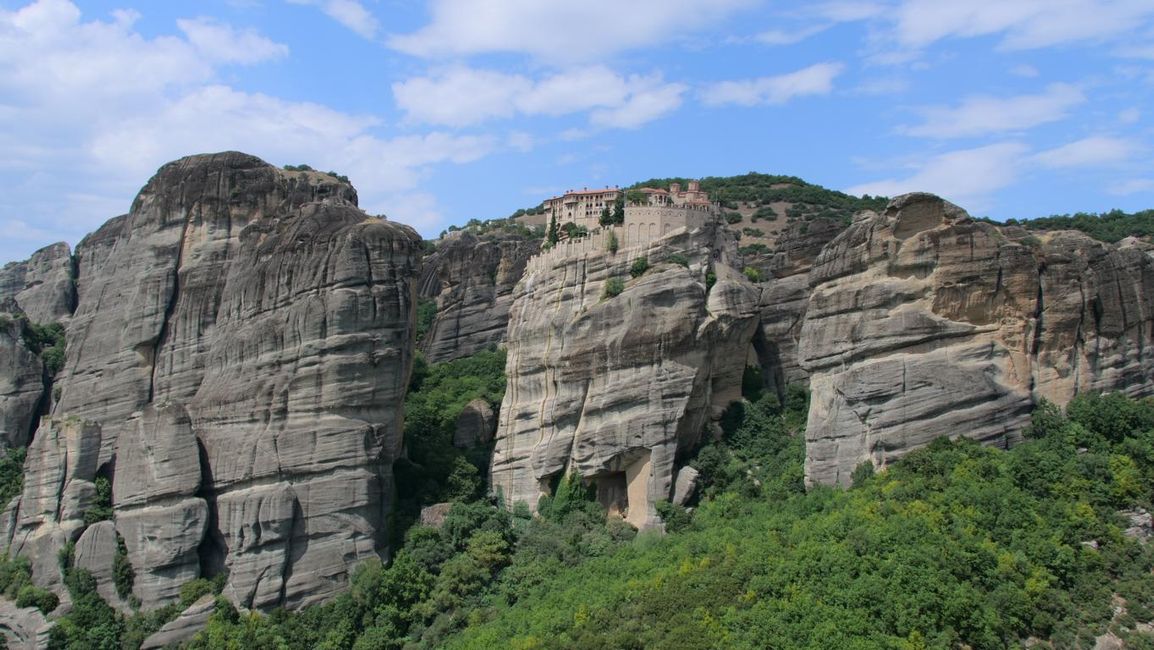
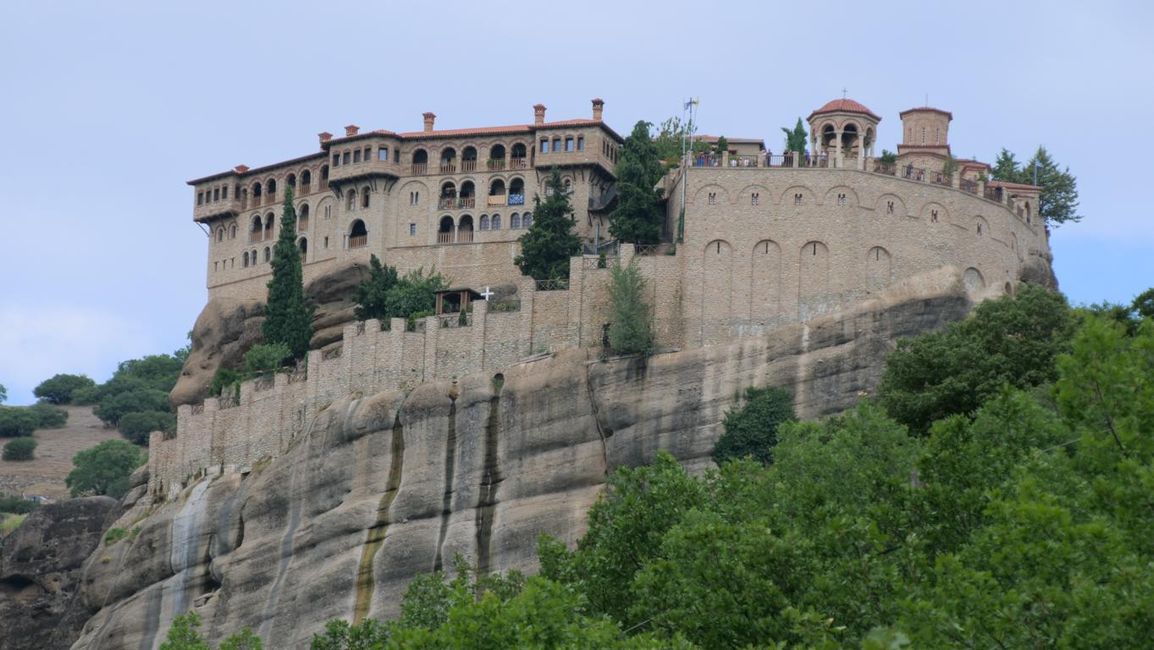
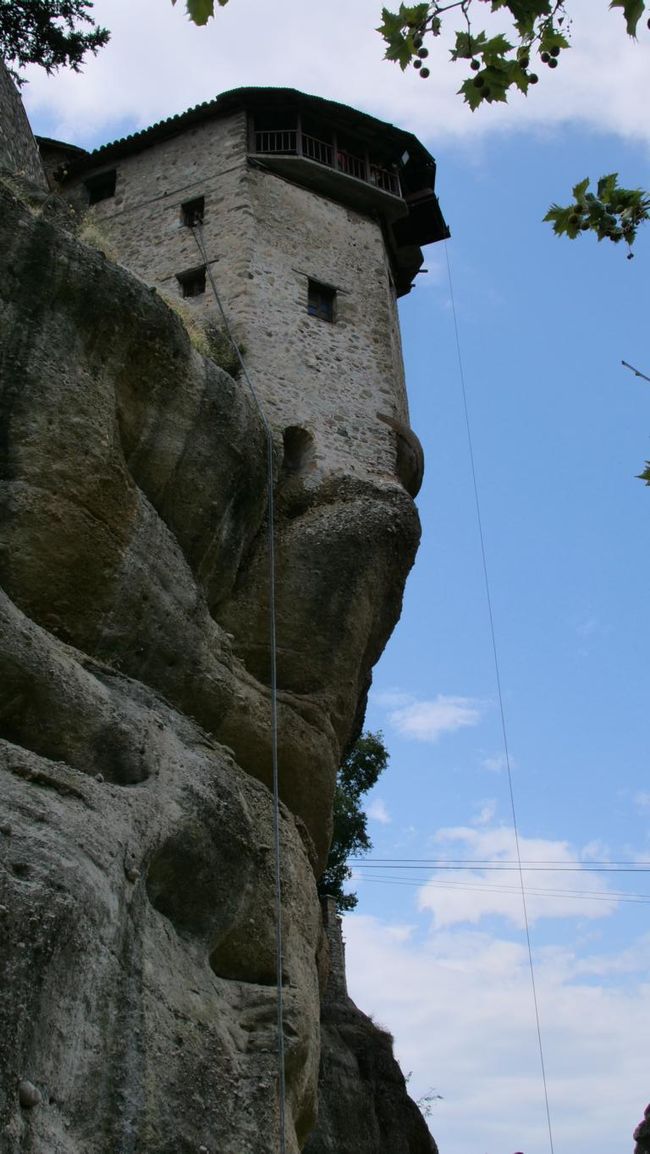
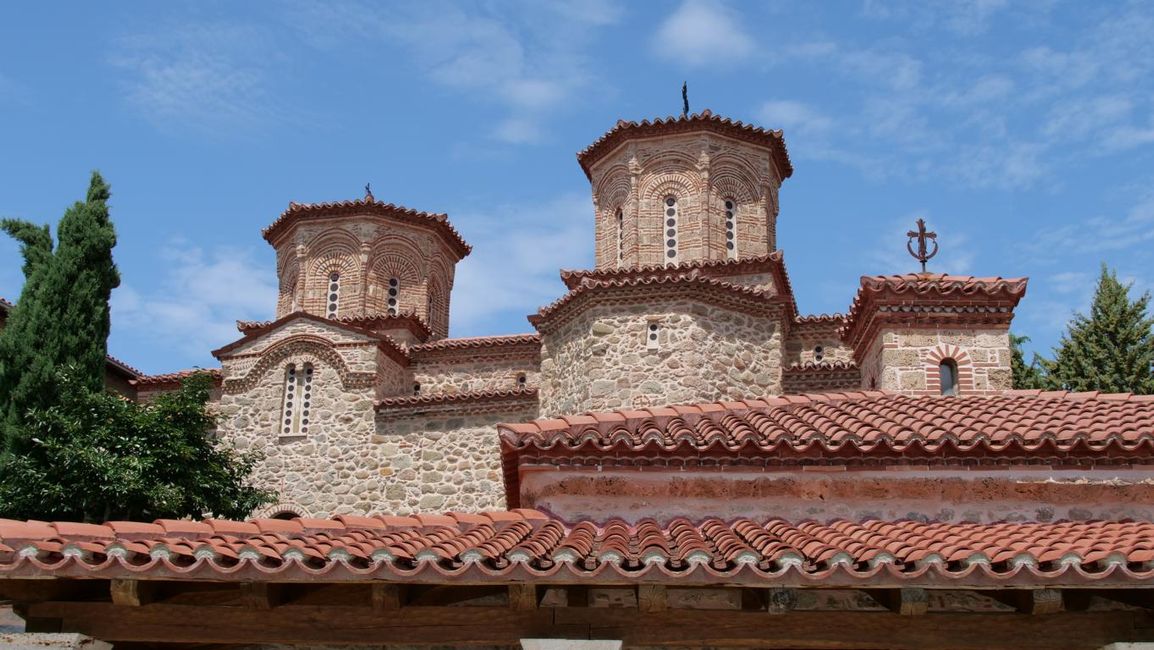
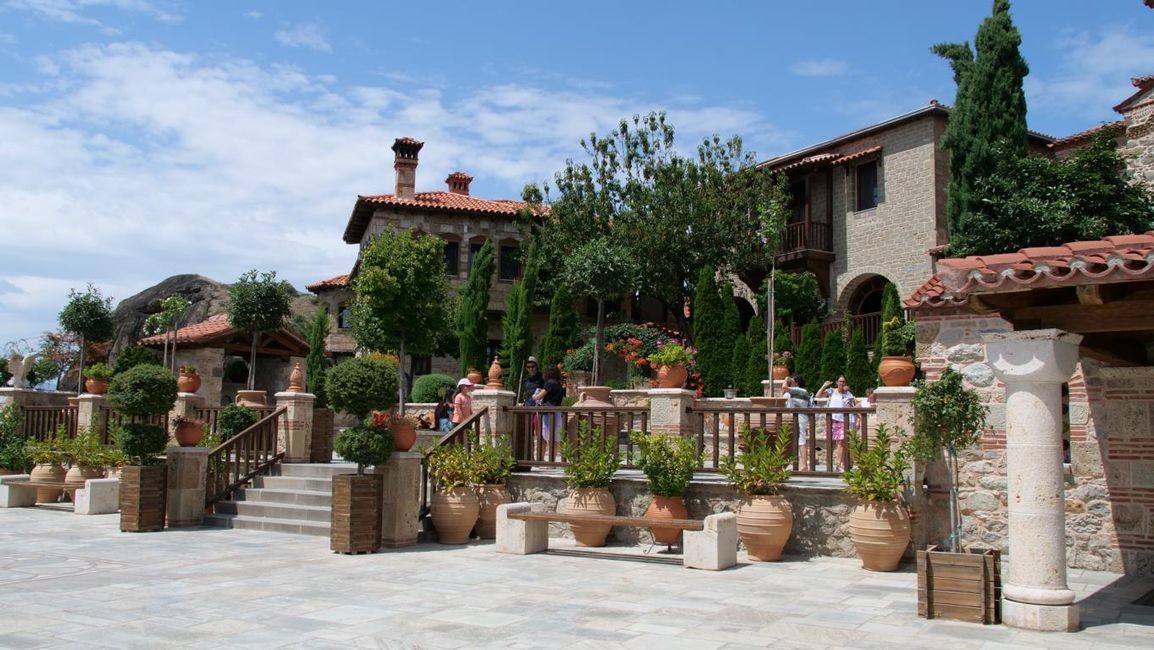
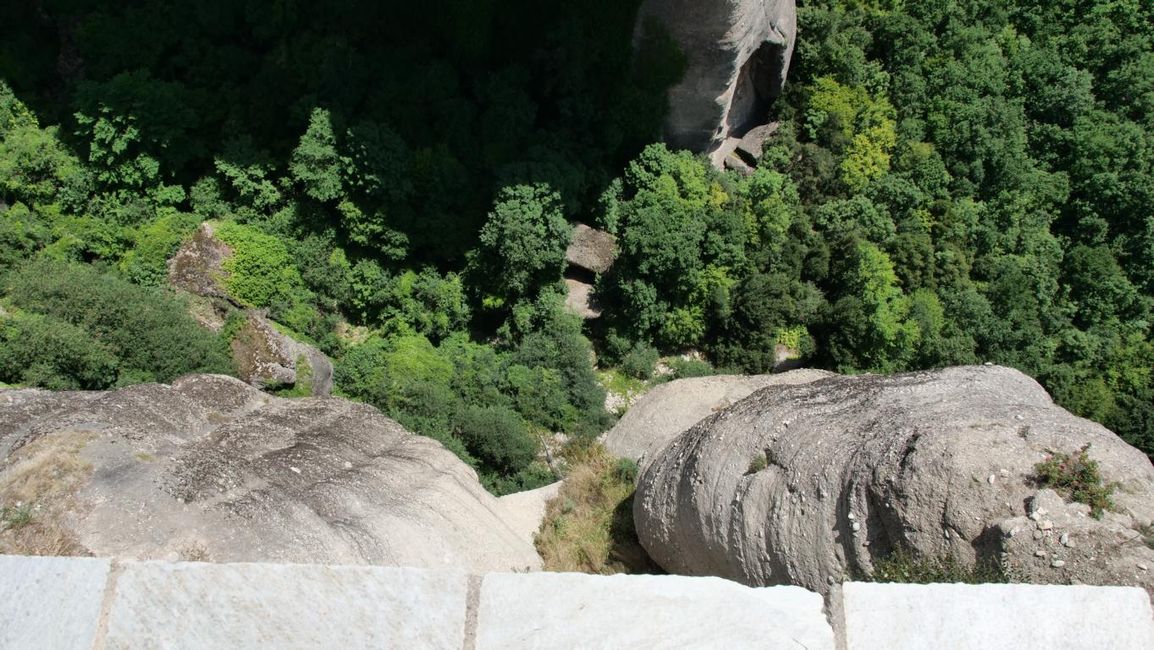
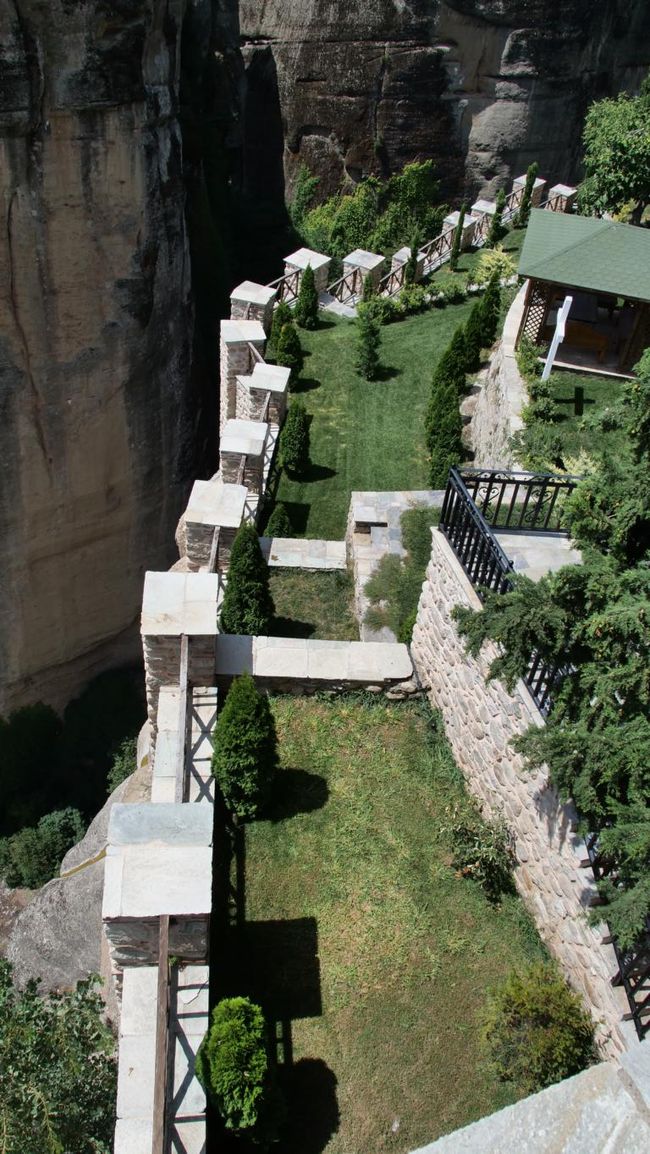
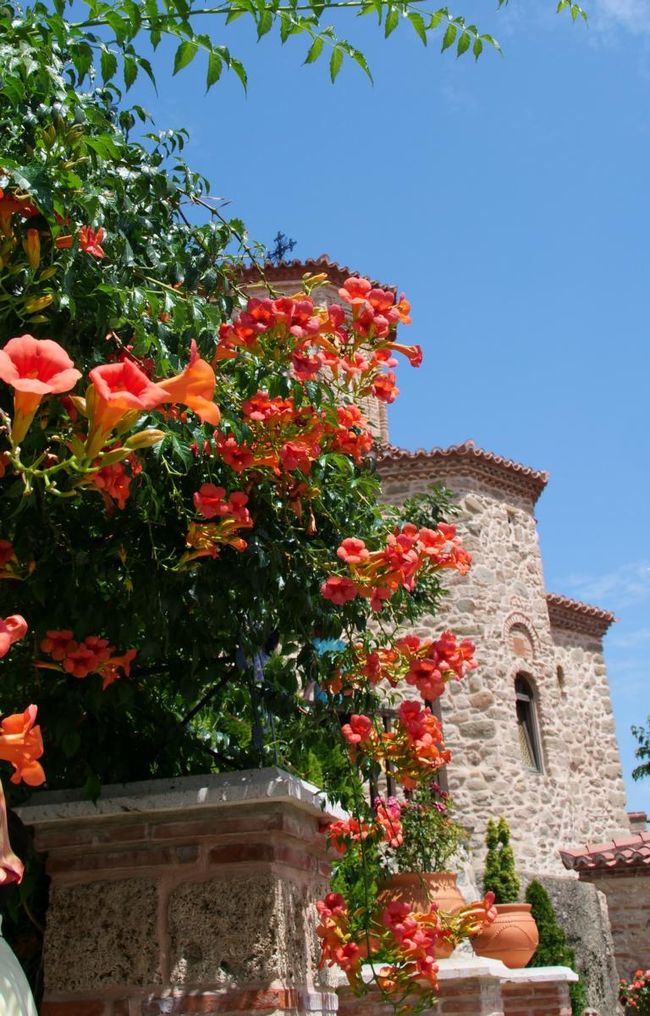
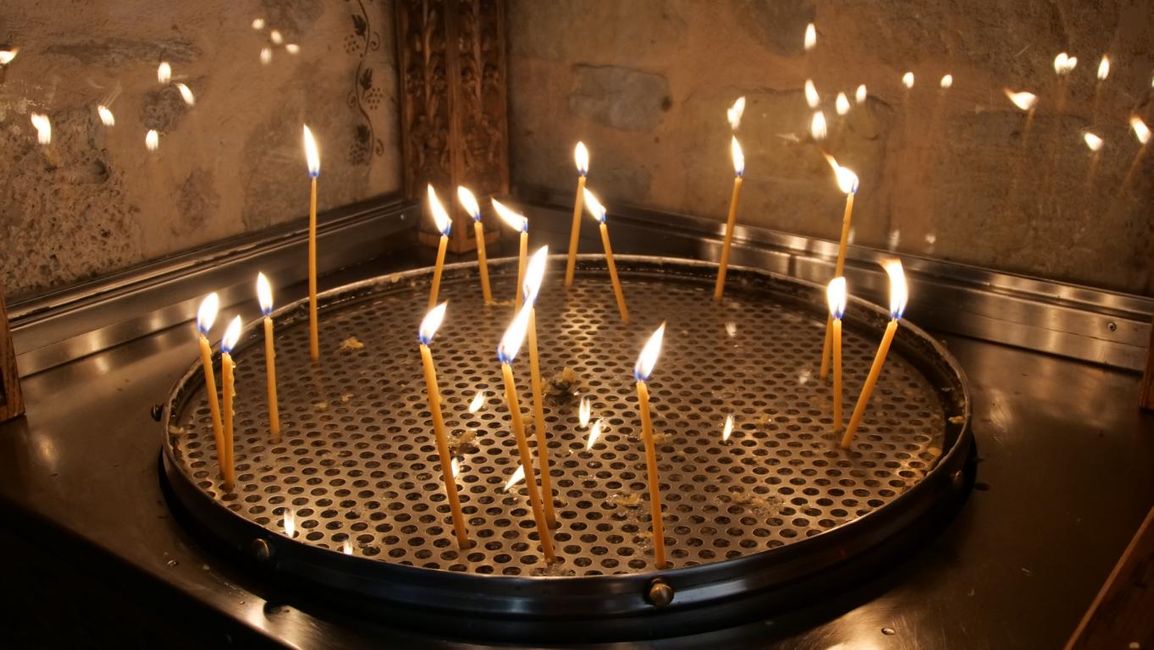
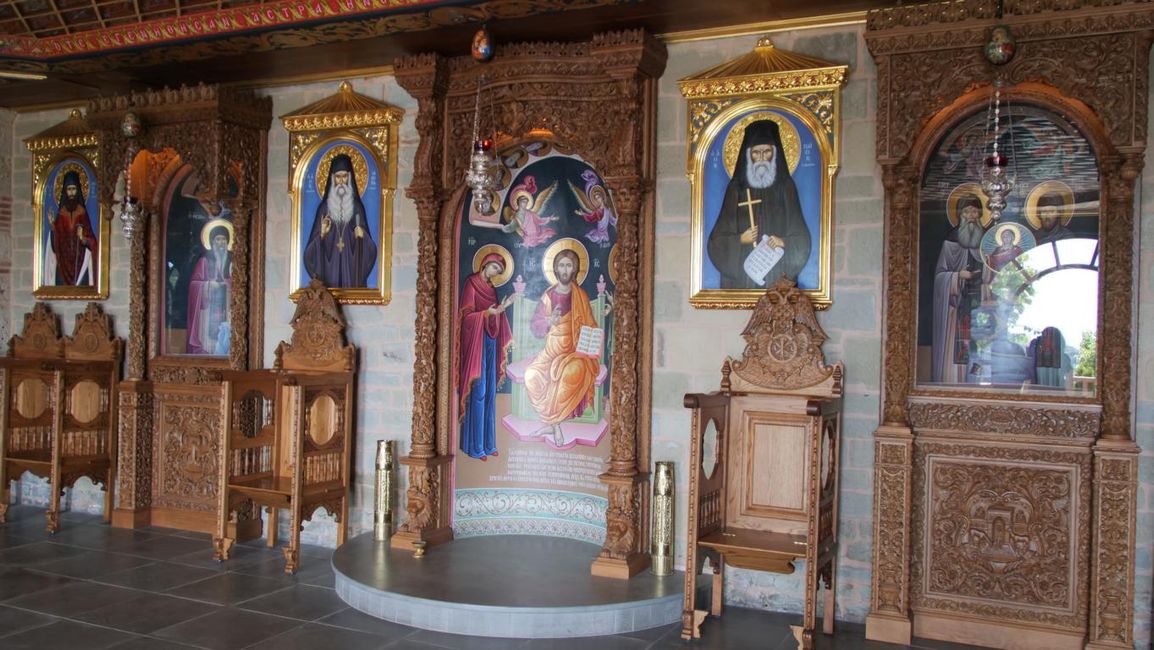
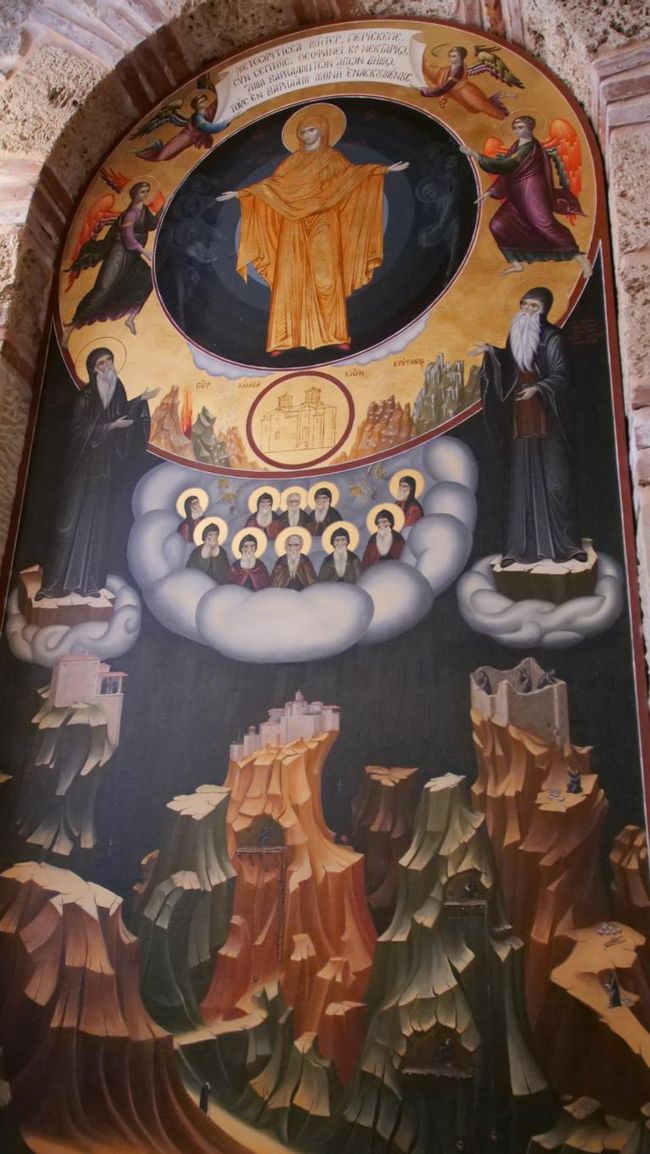
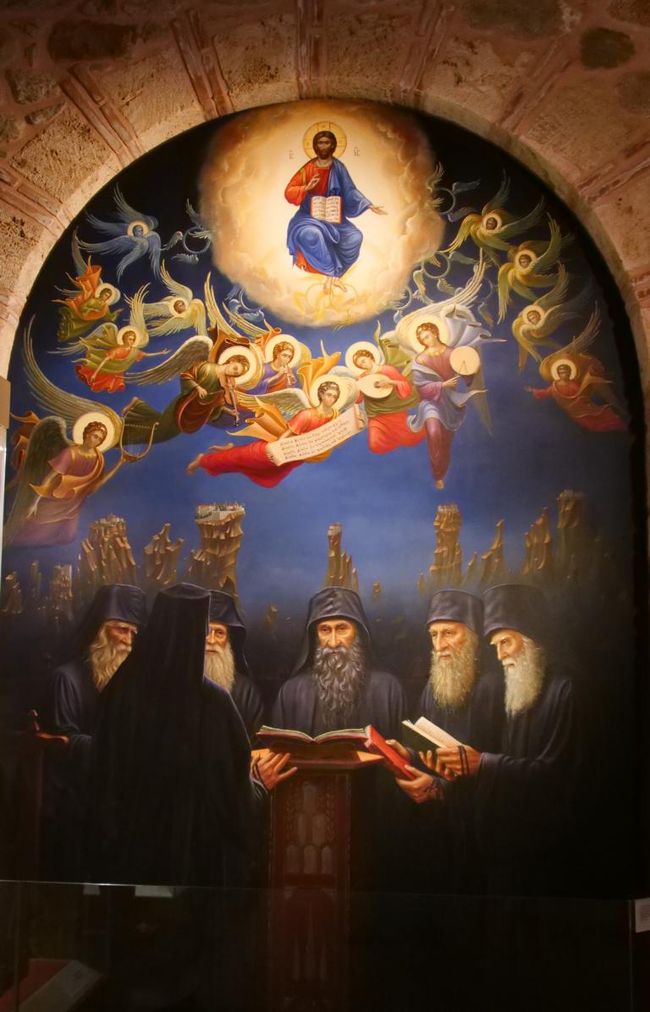
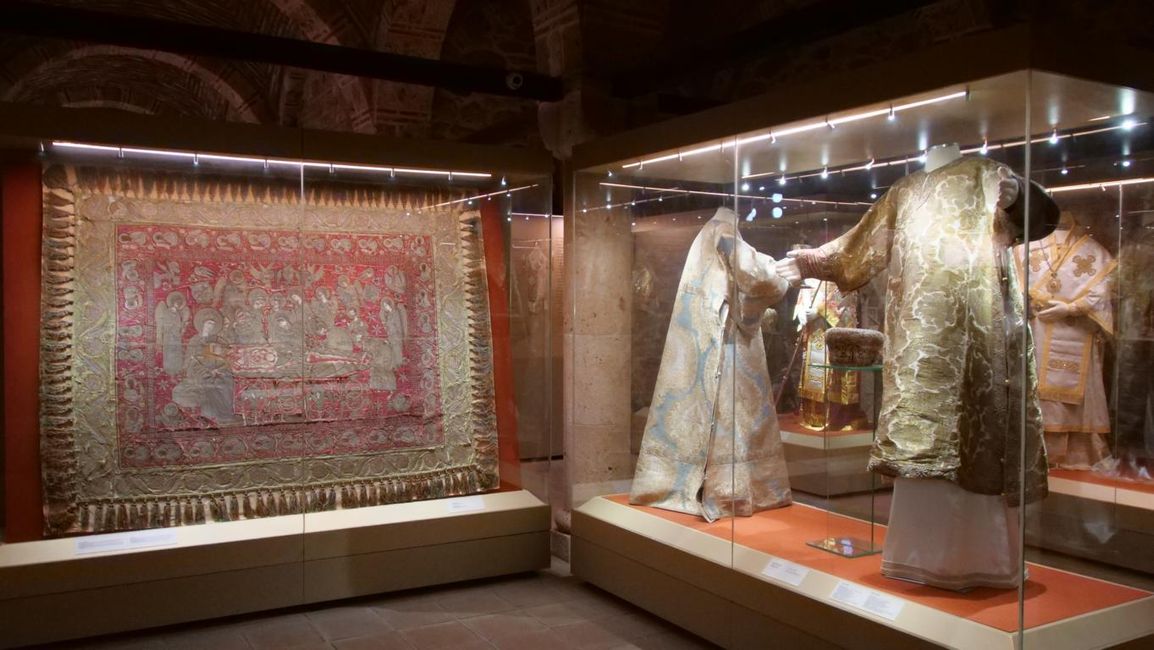
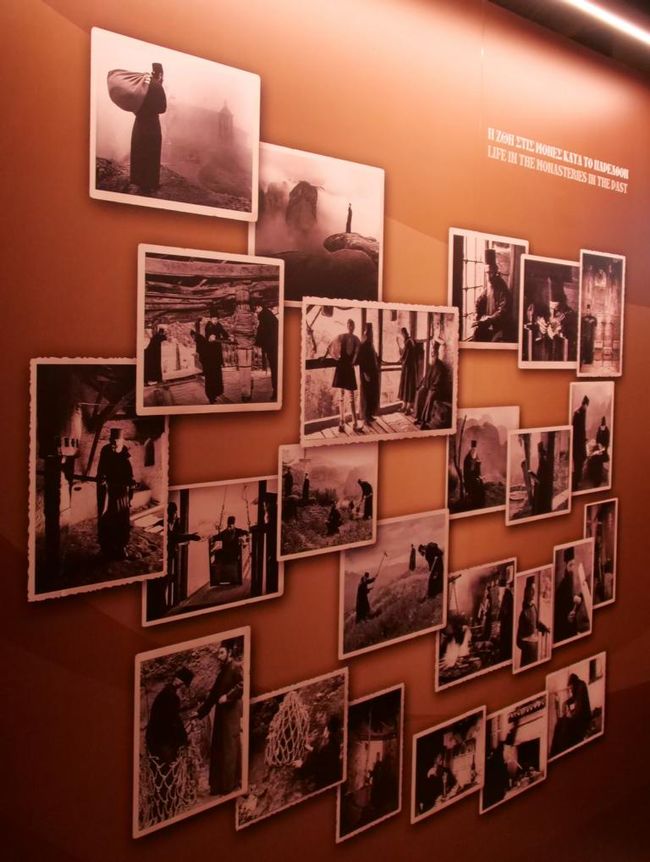
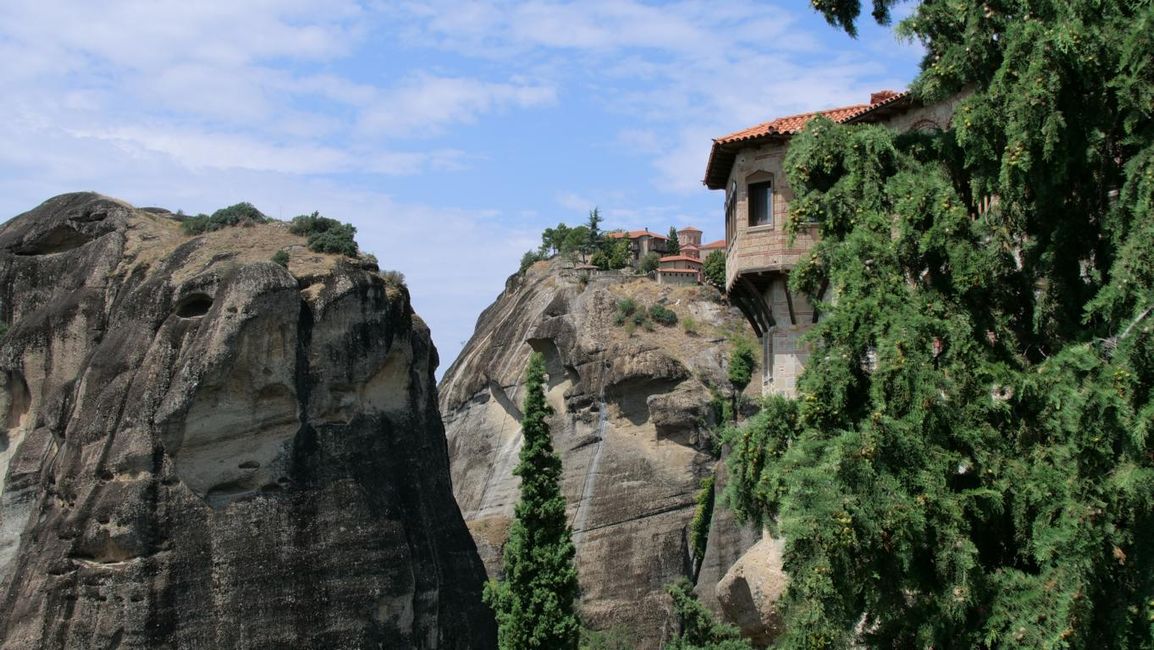
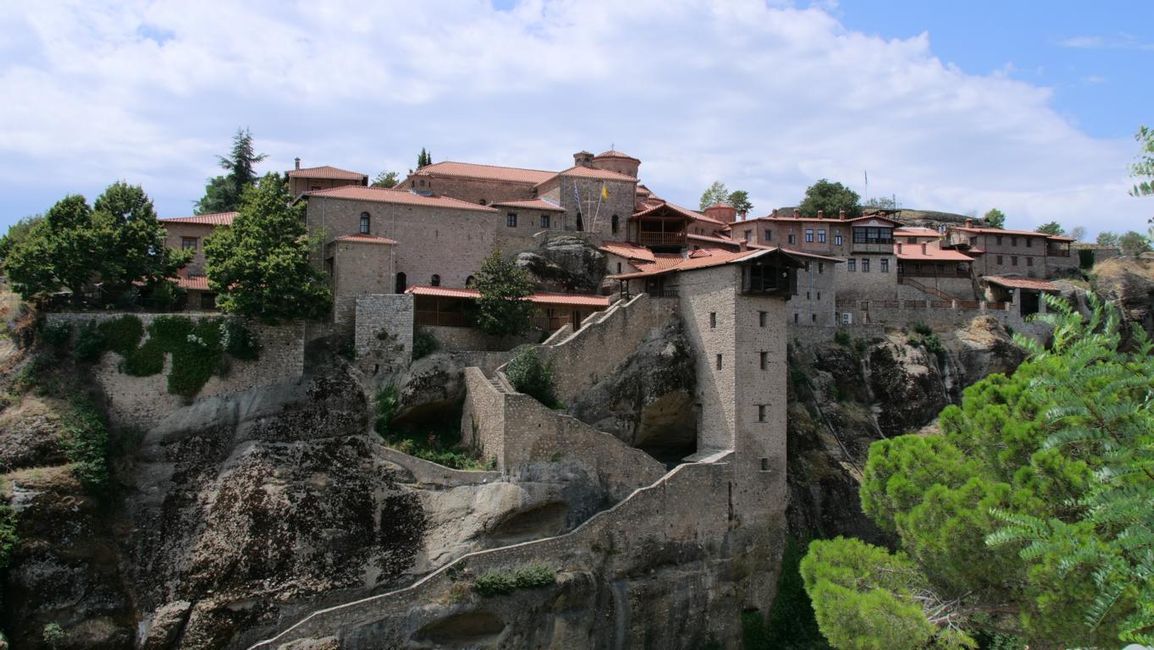
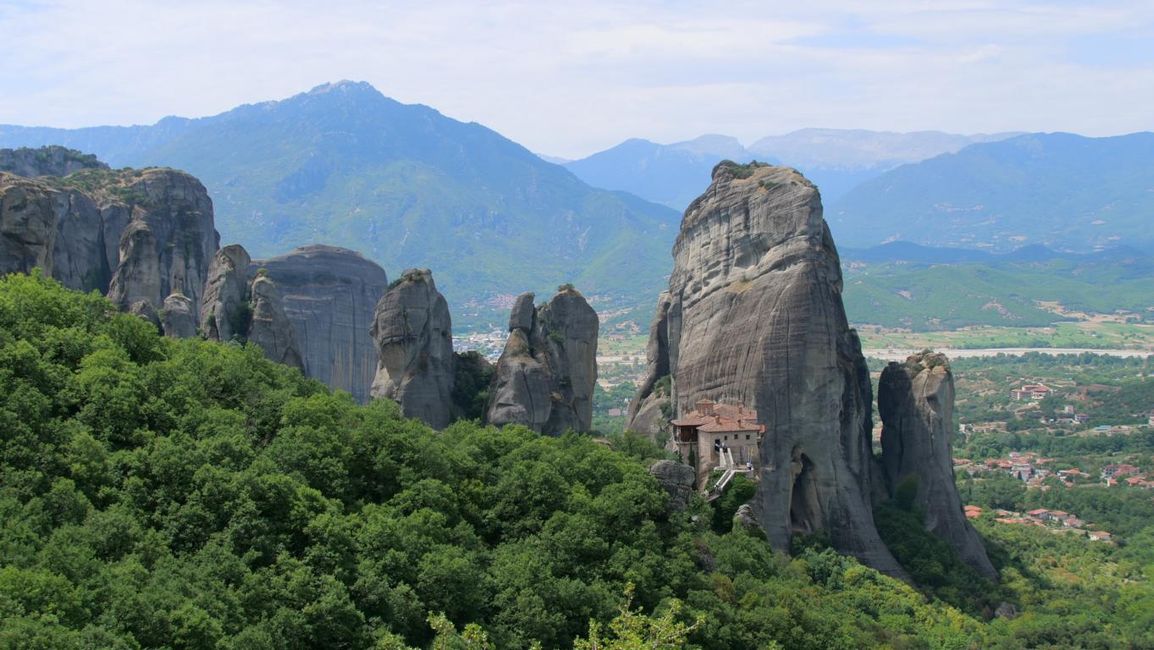
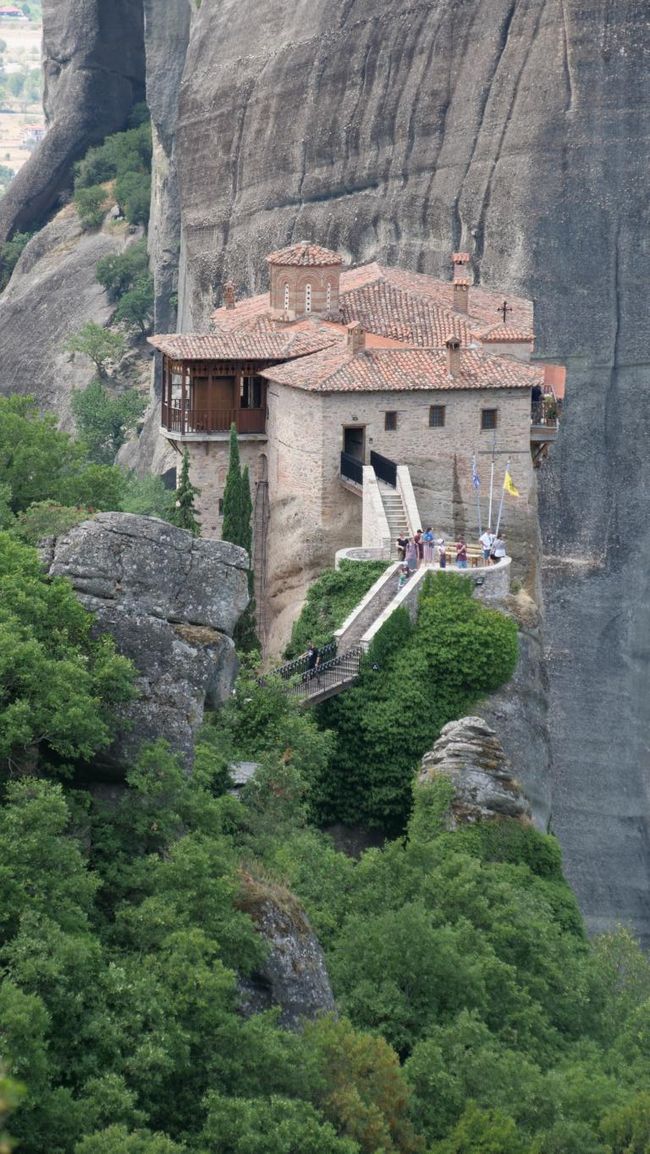
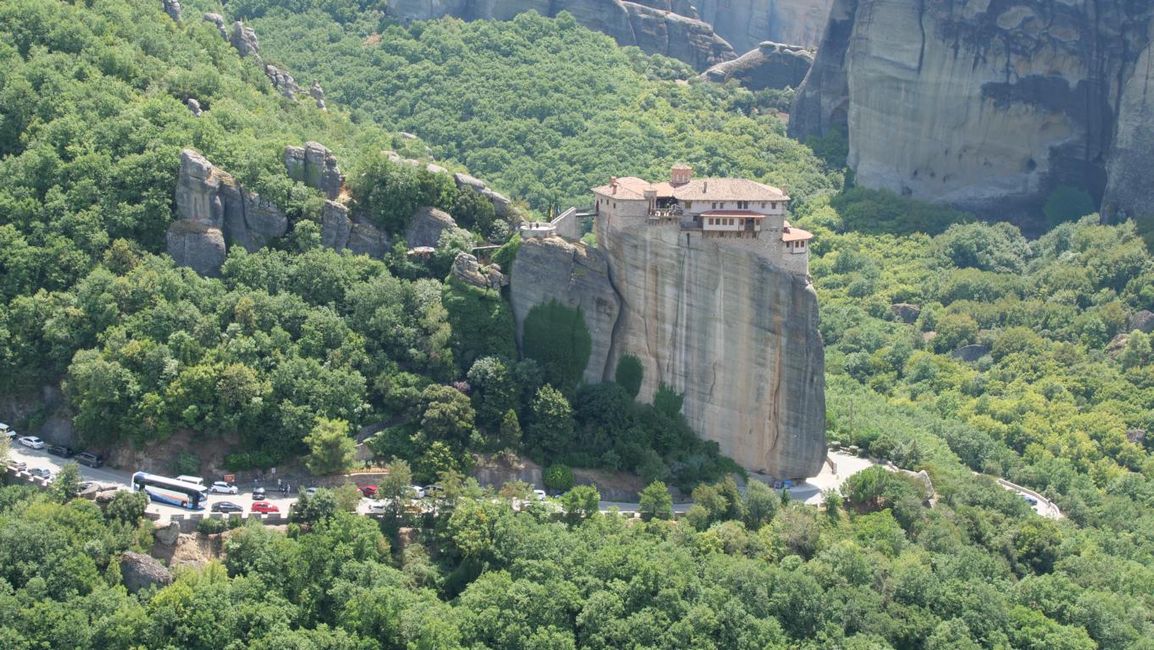
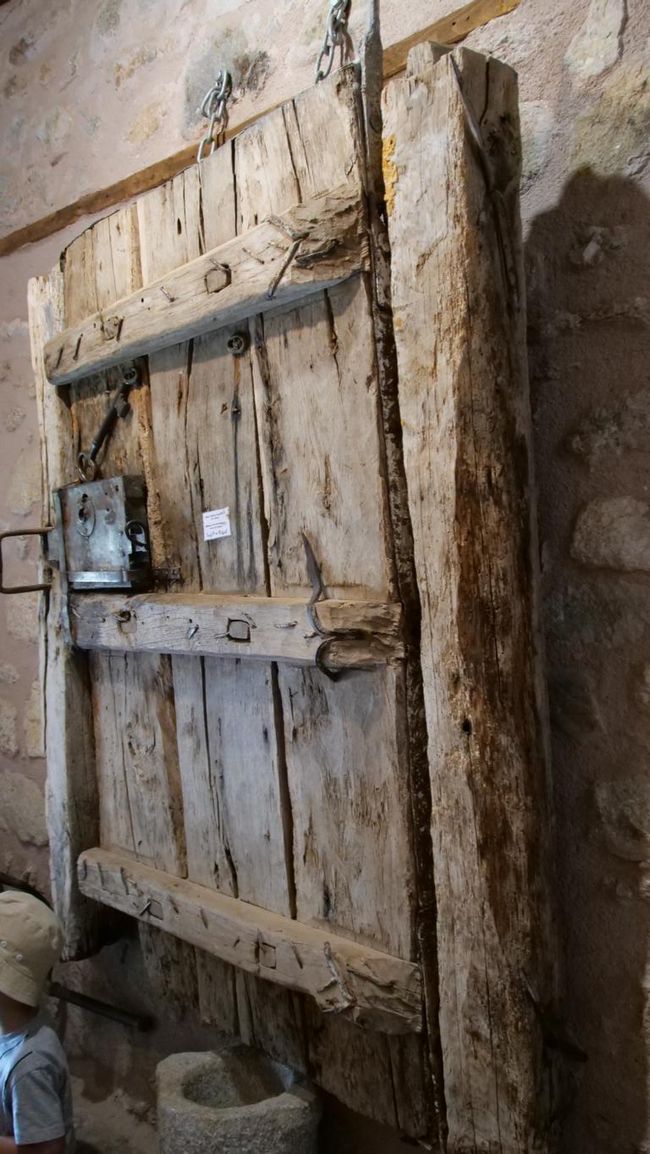
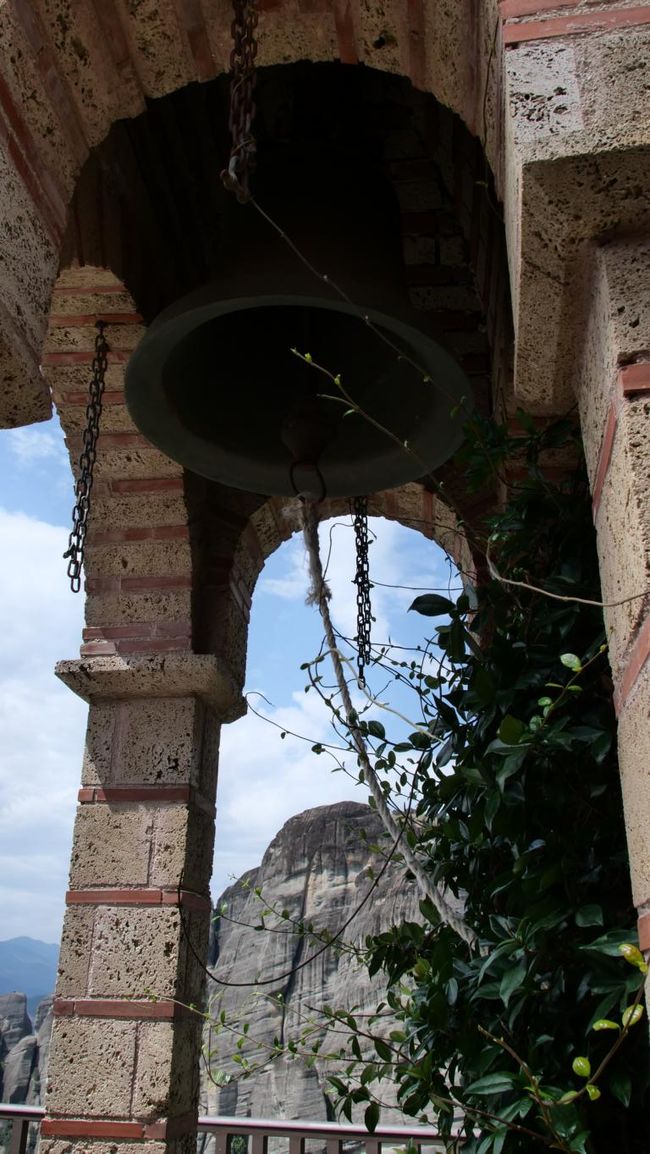
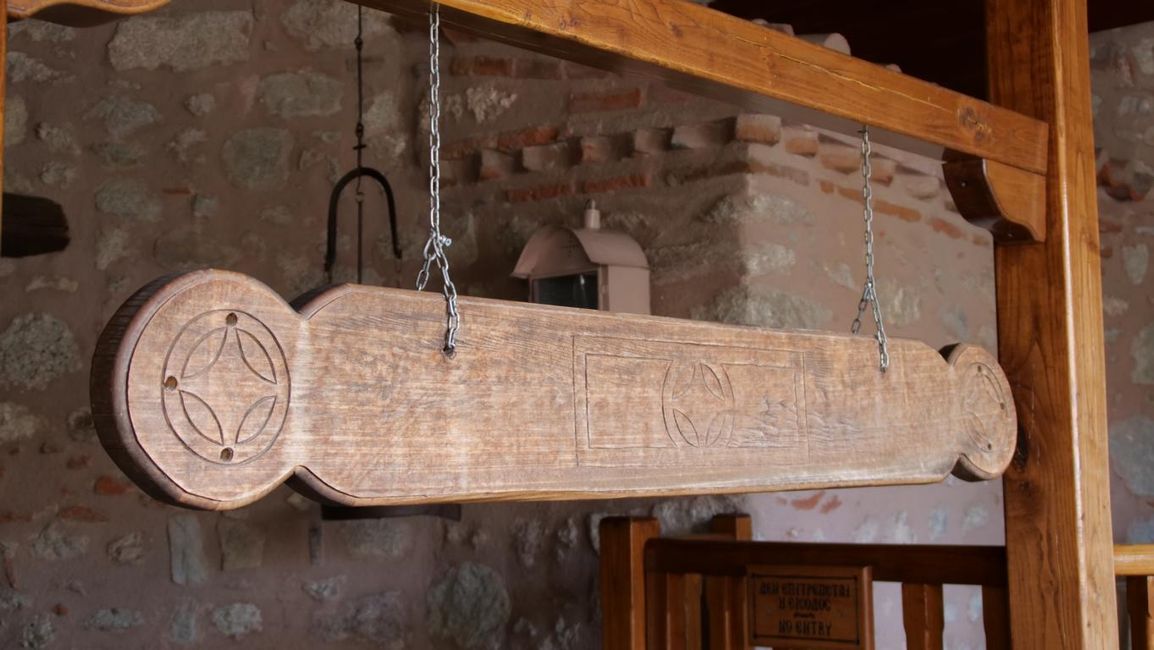
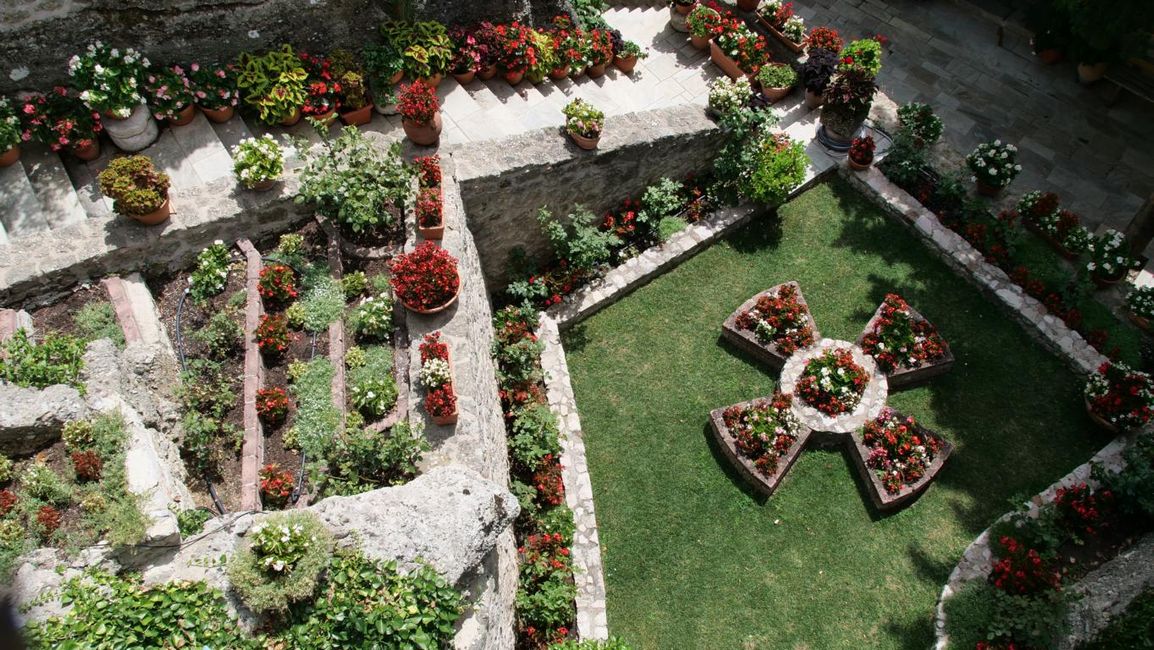
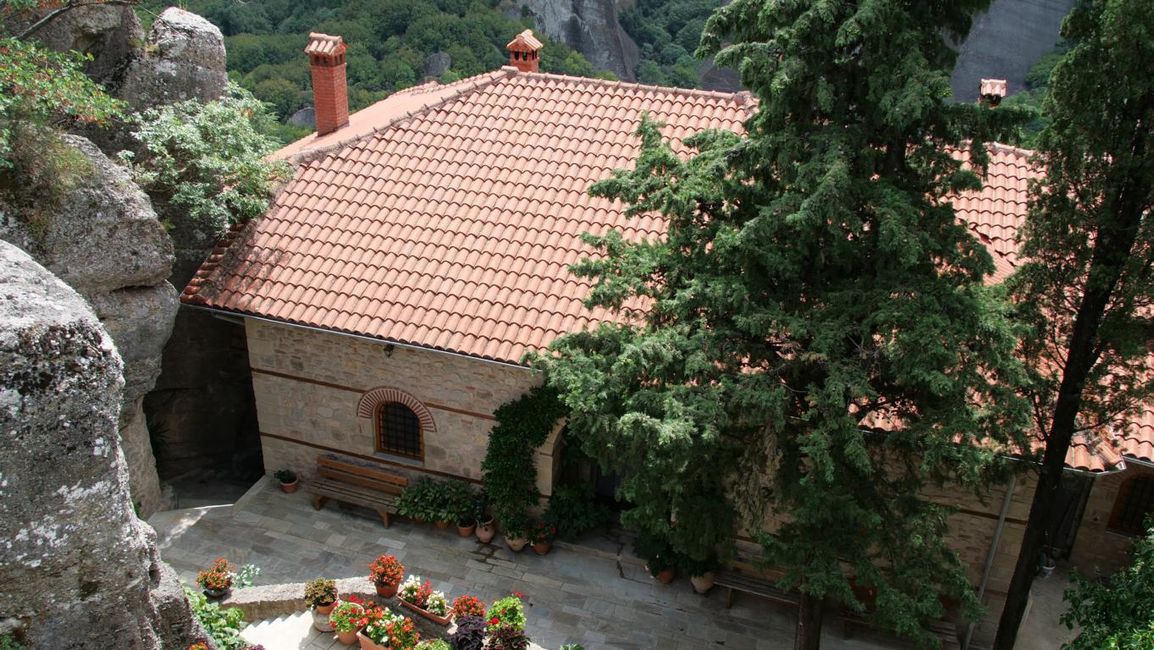
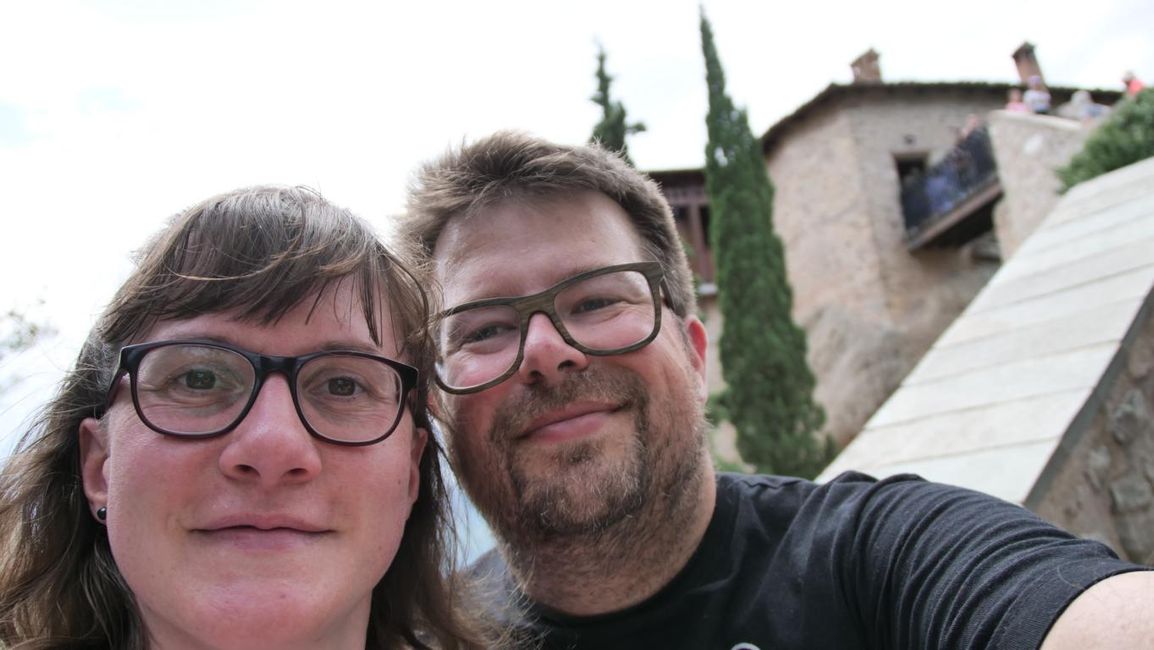
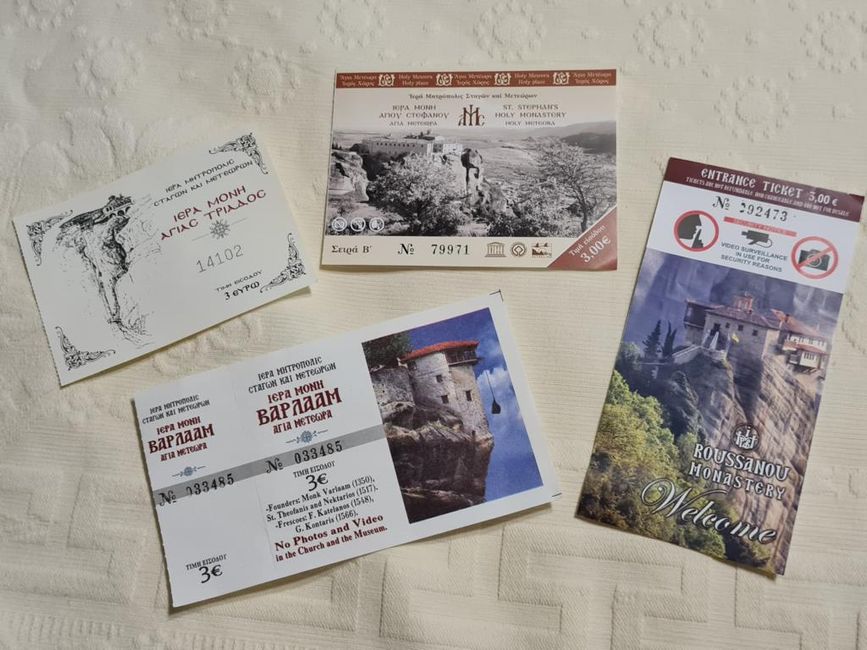
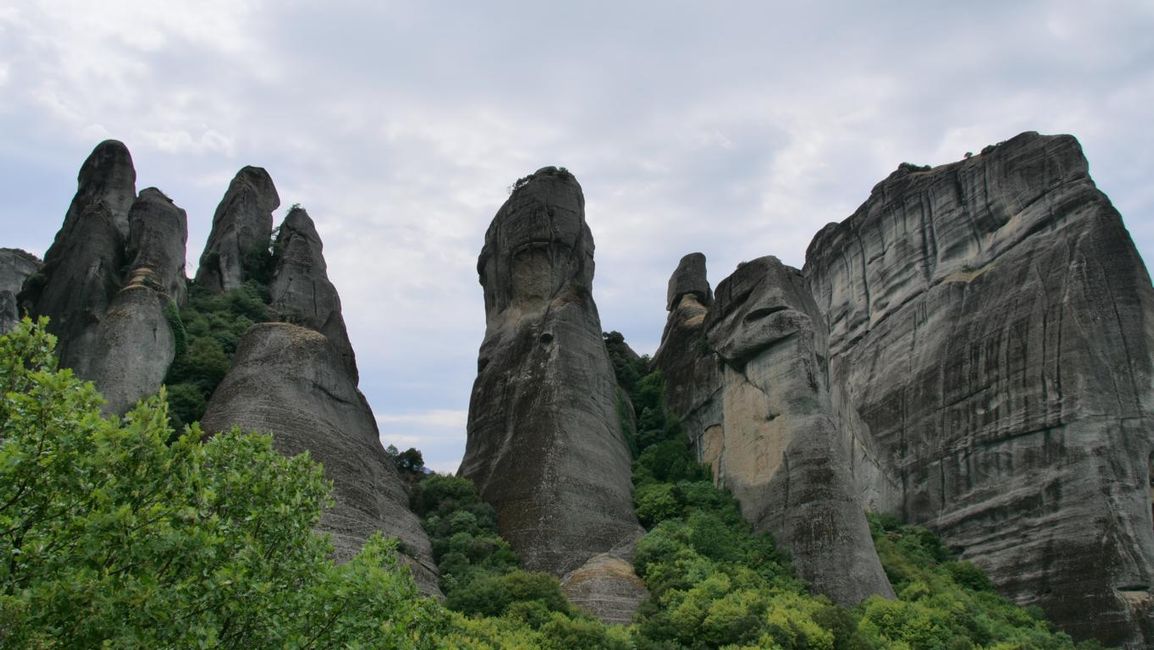
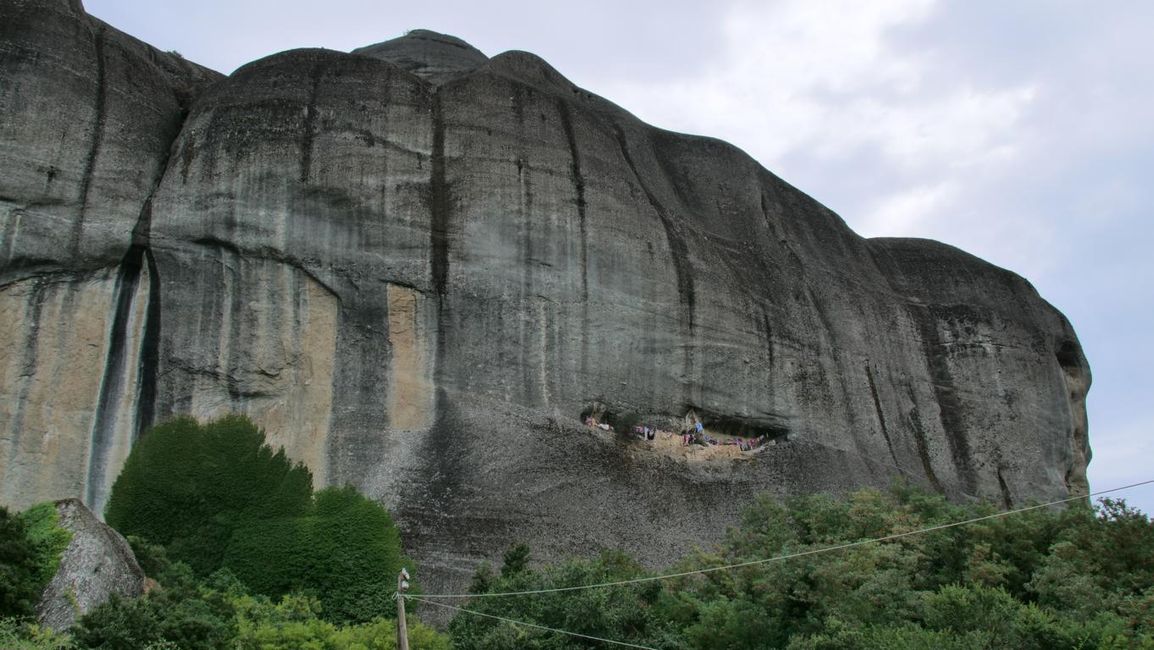
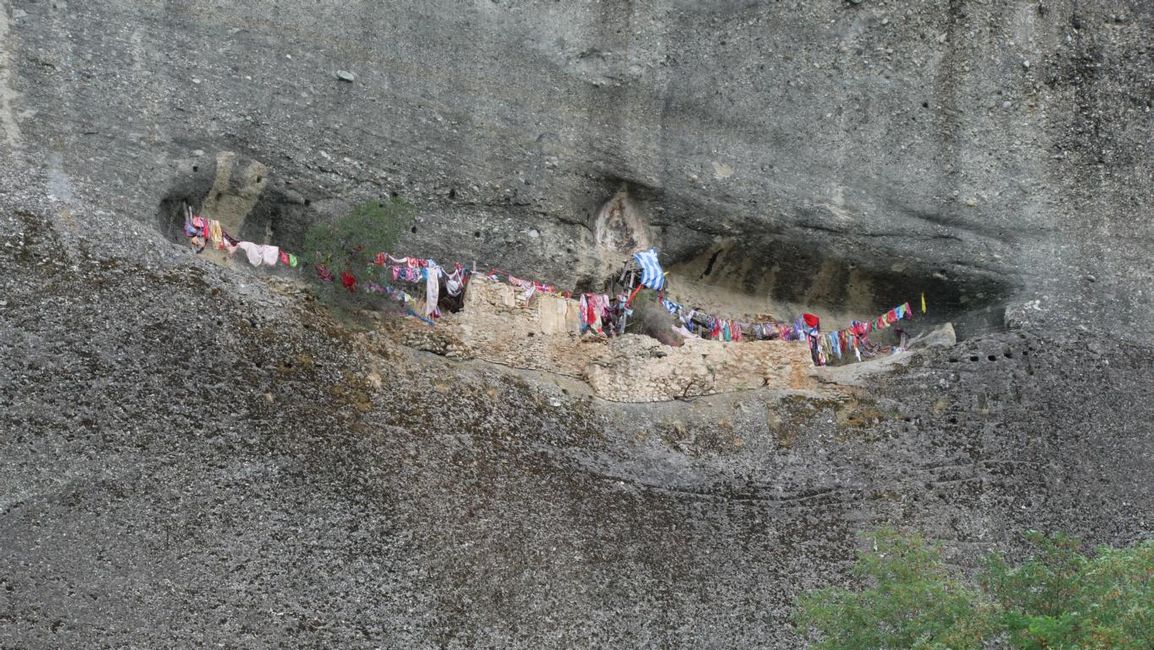
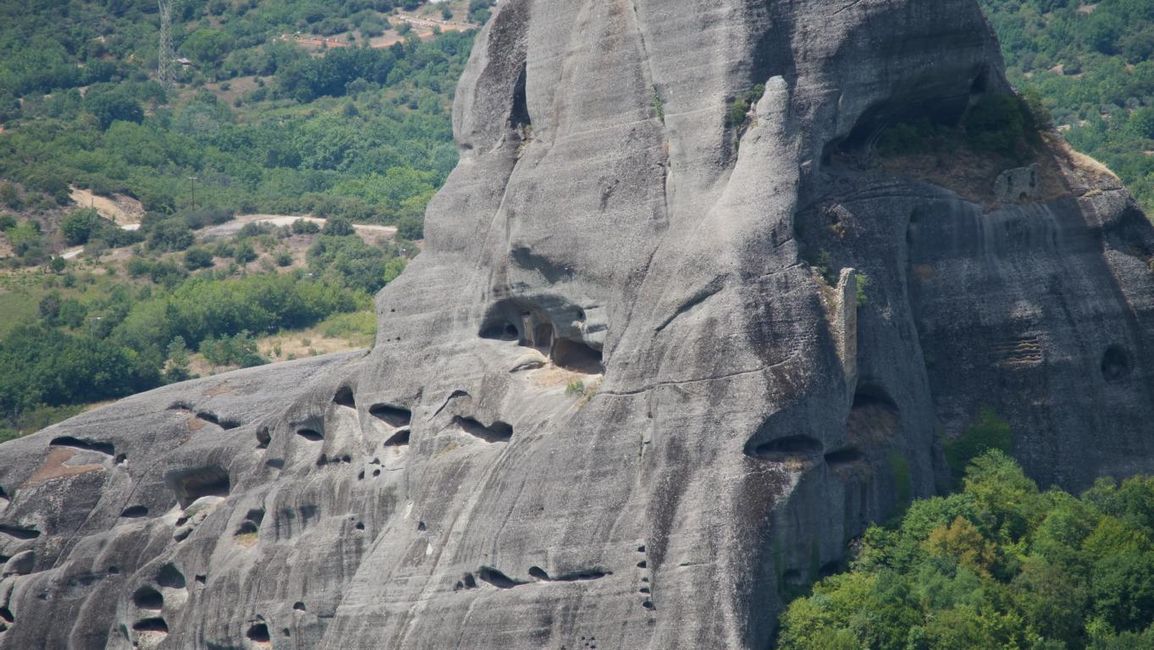
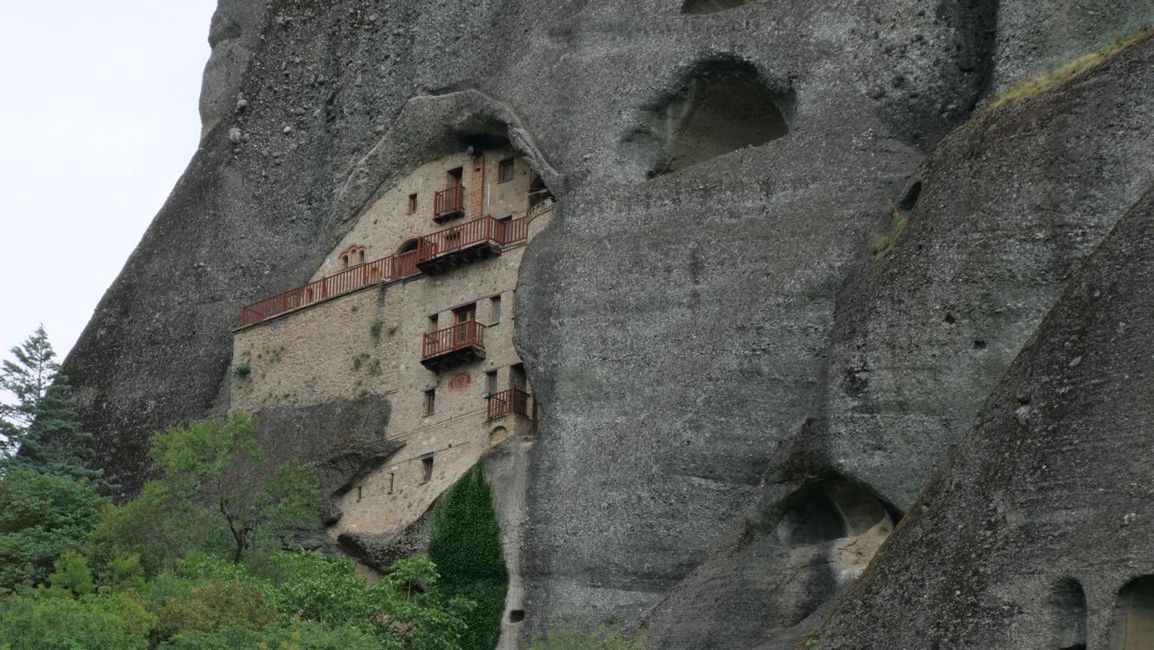
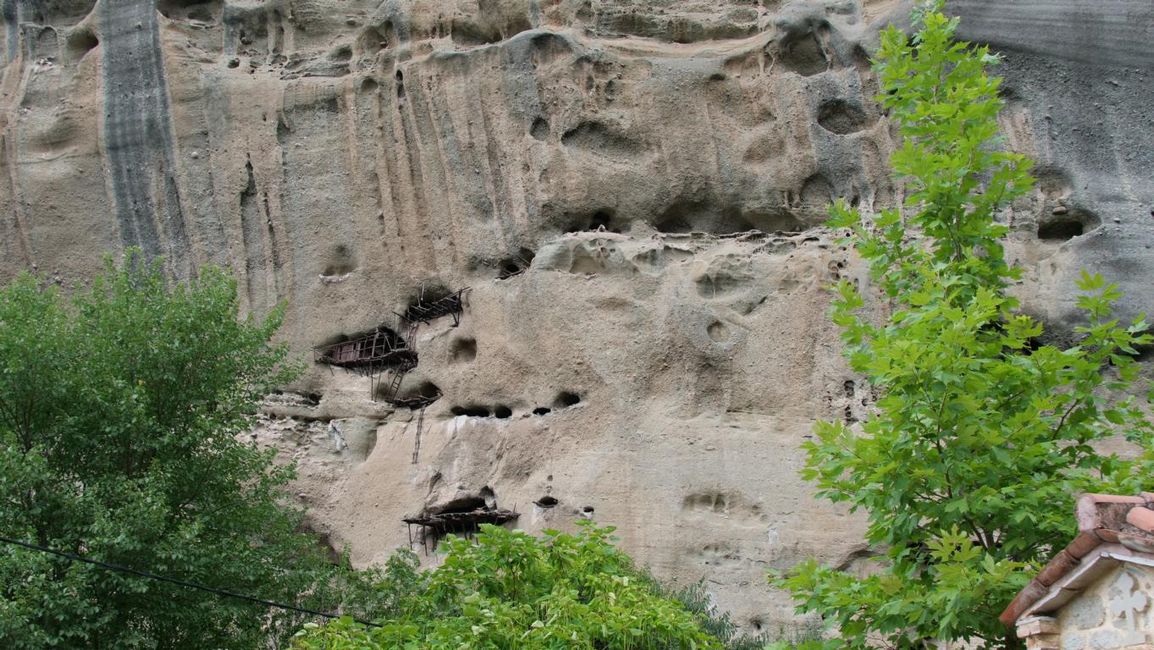
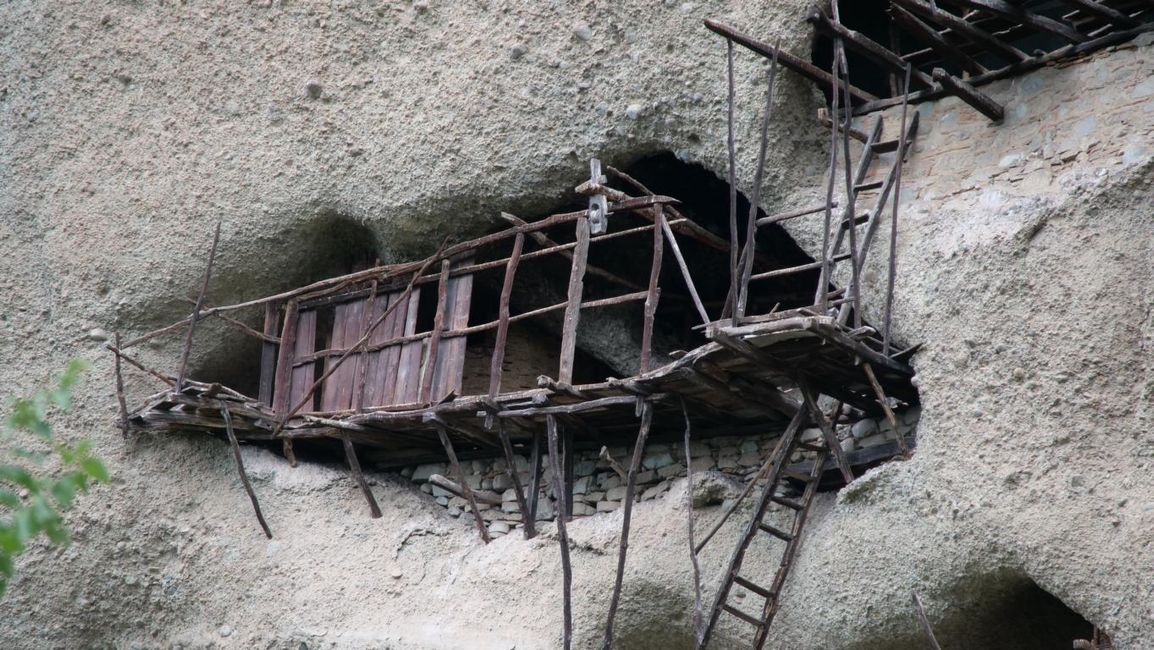
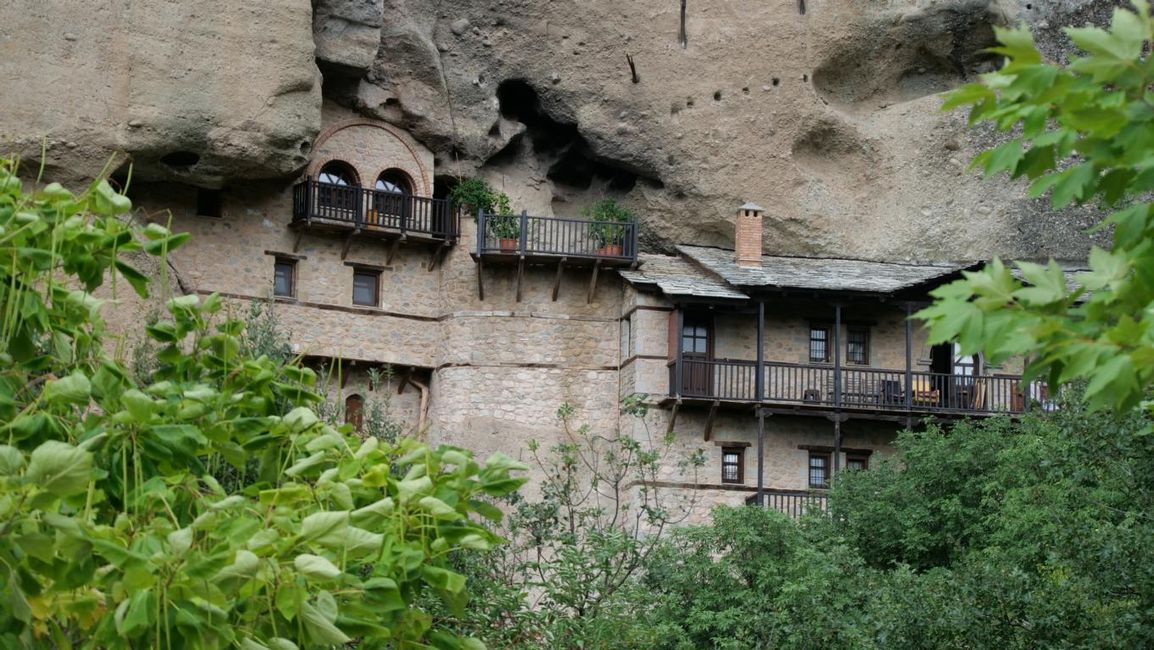
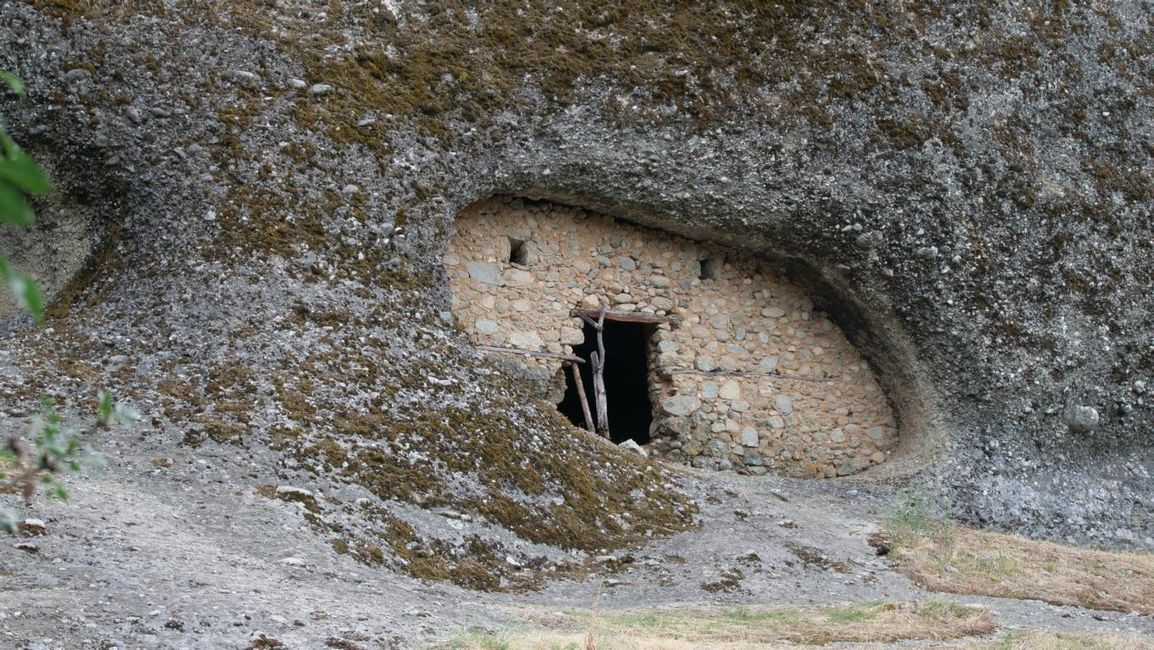
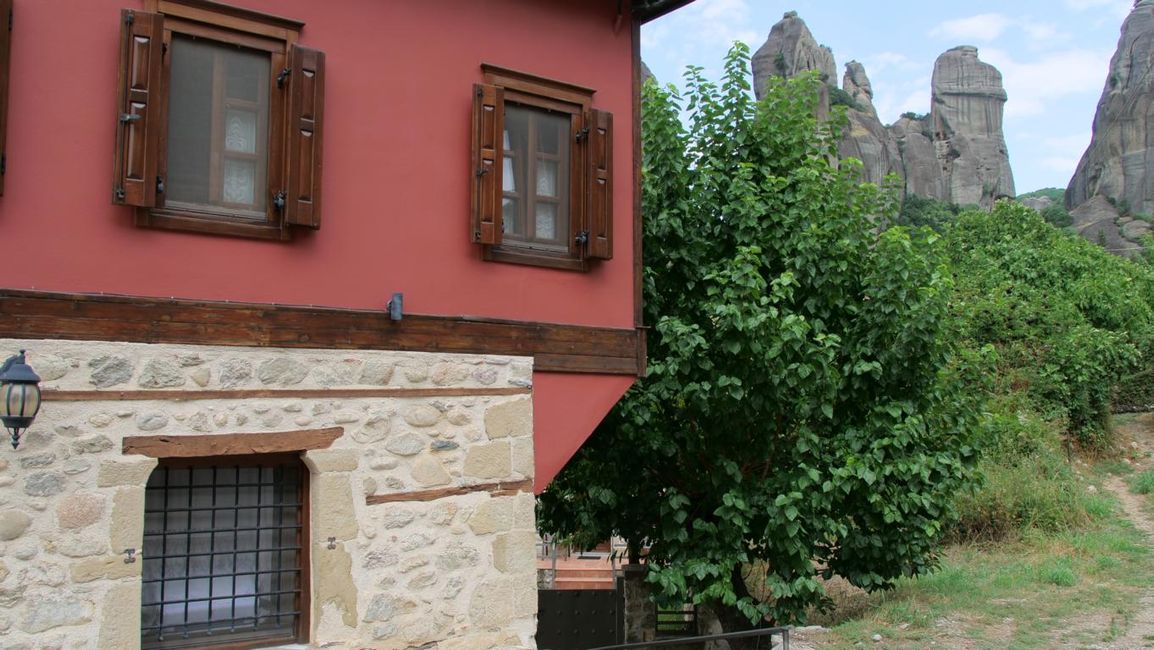
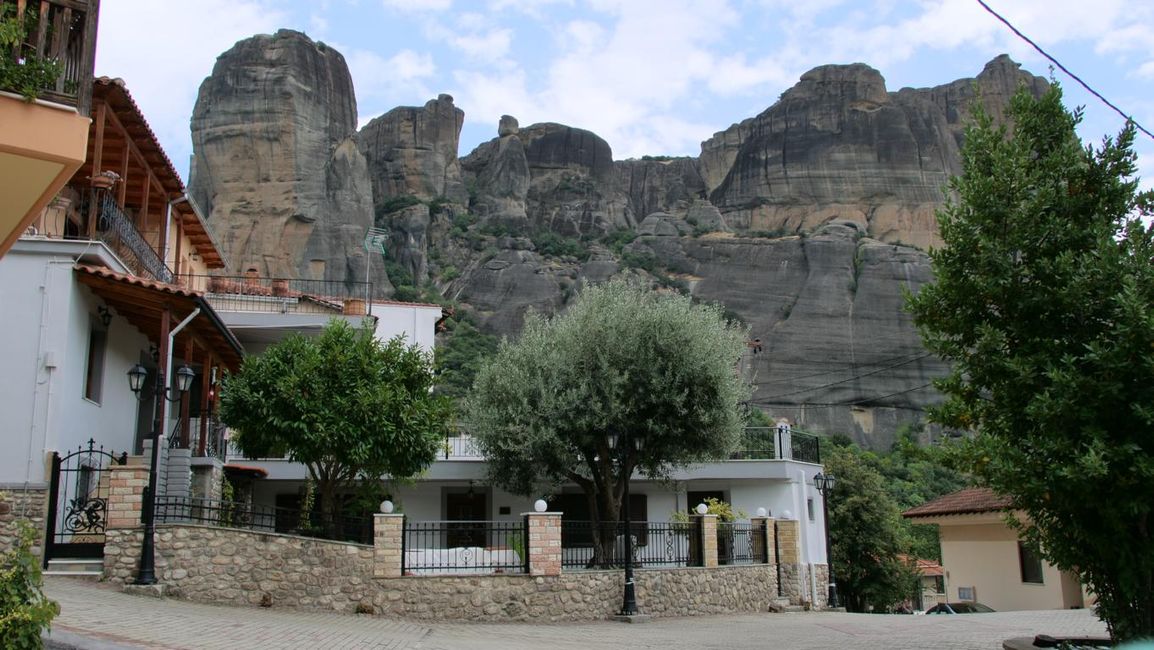
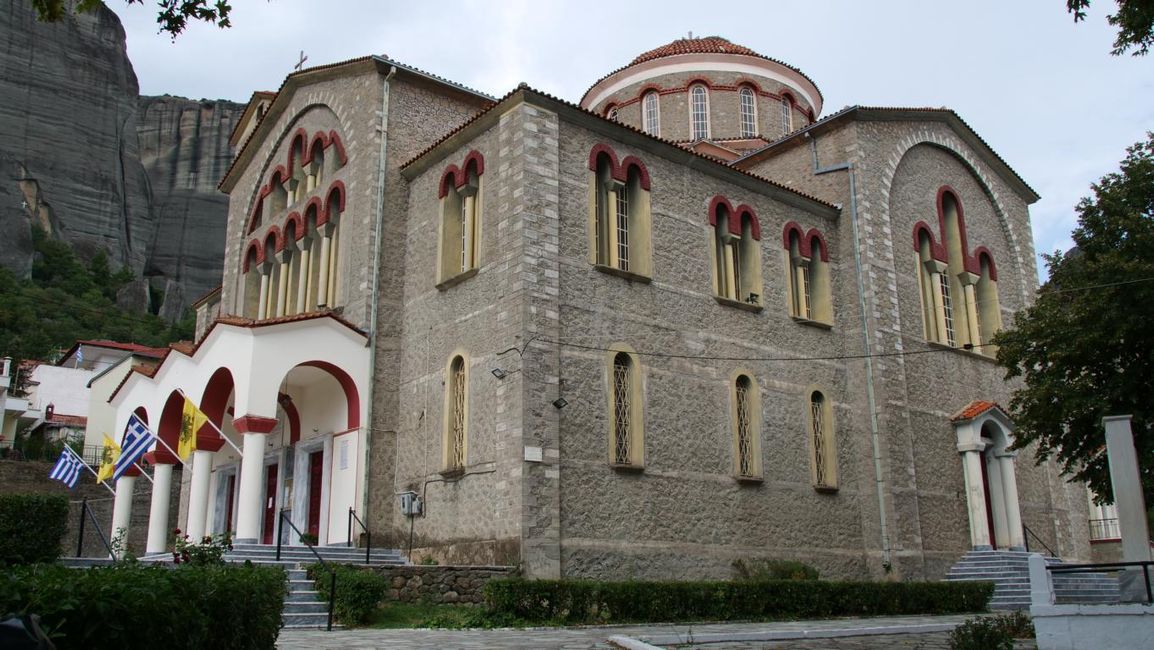
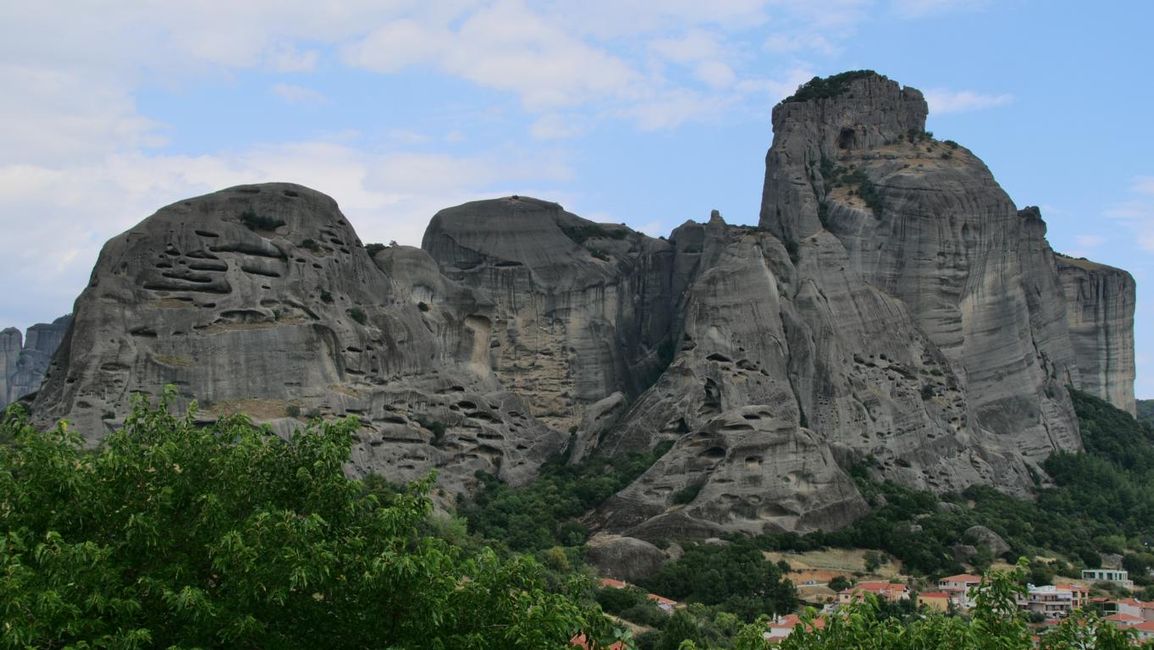
न्यूजलेटर के सब्सक्राइब करीं
So, we were back in Albania, drove to the Greek border and crossed it. Finally, we were able to drive on a proper highway and less crowded country roads. Suddenly, we came across rocks that didn't really fit into the landscape. Huge rocks formed in one piece, towering up to 600 meters above sea level. This landscape was formed in Thessaly over 60 million years ago and shaped by the influence of water, wind, and temperature differences. Then we arrived in the town of Kalambaka, checked into a very small but modern apartment, and went out to explore the surroundings. We found a Greek restaurant. The owner spoke German, had her mini-kitchen directly behind the counter, and prepared everything herself and fresh. We enjoyed olives, tzatziki, fried cheese, moussaka, souvlaki, and freshly harvested peaches from her garden. It was really delicious. After a good meal, we strolled through the town. It was hot, the temperature was just below 40 degrees. From here, we could see the huge rocks. Some of them had buildings and a white cross. We drove up to the rocks for the sunset. We had a great view of this unique landscape and could now see even more of the buildings on the rocks. These buildings are not just any buildings, they are the floating monasteries of Meteora. In fog or low-hanging clouds, it probably looks like the monasteries are hanging between heaven and earth.
The next day, we went on a discovery tour. Monks came here as early as the 11th century. Around 1344, the monk Athanasios and his foster father and other companions came to the area. They lived as hermits in several previously inhabited caves. Athanasios probably founded the Metamorphosis Monastery around 1356, the first and largest of the Meteora Monasteries. Originally, there were 24 monasteries, of which 6 are still inhabited and can be visited today. We started with the Kloster Agios Stefanos. It is the easiest one to reach, with a large parking lot right in front of it. We crossed a modern bridge, arrived at the gate exactly on time at 9 o'clock, and were the first visitors of the day. We entered a beautiful courtyard, looked inside the chapel, saw the cemetery church from the outside, and enjoyed a fantastic view of the town of Kalambaka below. The beginnings of monastic life here are unknown. According to destroyed inscriptions, the year 1191/1192 could be read here. In 1961, the monastery was handed over to a community of nuns for use. Our next destination was the Kloster Agia Triada. It is located very close and opens at 10 o'clock, so once again we were among the first visitors to the site. From a distance, we saw the exterior walls and a horizontally running cable car connected to the isolated and seemingly inaccessible high rock. To reach the monastery, we walked down a path and then climbed up 120 steps. During this hike, we wondered how the first monks in the 11th century had come to this area. Where there are now roads, footpaths, and stairs, there were once just smooth rocks, making it almost impossible to reach the top of a rock. The building materials and the monks themselves were lifted up with ropes and lifts. We could see one of these windlasses very well in the monastery. The monastery is high up but close to the town of Kalambaka. So, the white cross that we had already seen from below belongs to the Monastery of the Holy Trinity. We went back to our accommodation because at noon we had booked a tour around the Meteora monasteries. We met our tour guide Kristina and a family of four and set off. Our next visit was to the Kloster Varlaam. For the first time in the 14th century, a hermit lived on this rock. The construction of the monastery complex probably didn't begin until 1518. The monastery was relatively easy to reach. We crossed a newly built bridge, crossed a gorge, and then climbed over 100 steps. We found a relatively large complex where we visited the garden, the chapel, and the museum. Our last visit was to the Kloster Roussanou. The origin of the name, the time, and the circumstances of its founding could not be conclusively determined. The former monk monastery was abandoned at the beginning of the 20th century, and for years, a pious abbess lived here alone until her death. In the years that followed, a community of nuns was established, making it the second nun monastery of Meteora. Today, the monastery is accessible via two bridges, but for most of its existence, it could only be reached by a dangerous rope ladder. Since the rock on which it is built is relatively small, it was built upwards, and so the main church is on the ground floor. Kristina told us a lot about the formation of the rocks and monasteries and the life of the former monks between the visits and photo stops. Afterwards, we went to some interesting caves and ruins in the rocks that were also used for residential purposes in the past. In the caves, we saw hermitages and uninhabited sketes, where guests could be accommodated in the past.
Naturally, the monasteries are now part of the UNESCO World Heritage and are one of the most visited attractions in Greece. The landscape, the construction of the monasteries, and the backdrop offered here are simply heavenly. Despite several explanations, it is incomprehensible and absolutely impressive how people in the past climbed these rocks and could build structures on them.
न्यूजलेटर के सब्सक्राइब करीं
जबाब (1)
Ute
Ja die Klöster sind schon beeindruckend, habe ich selbst auch erlebt👍😊😊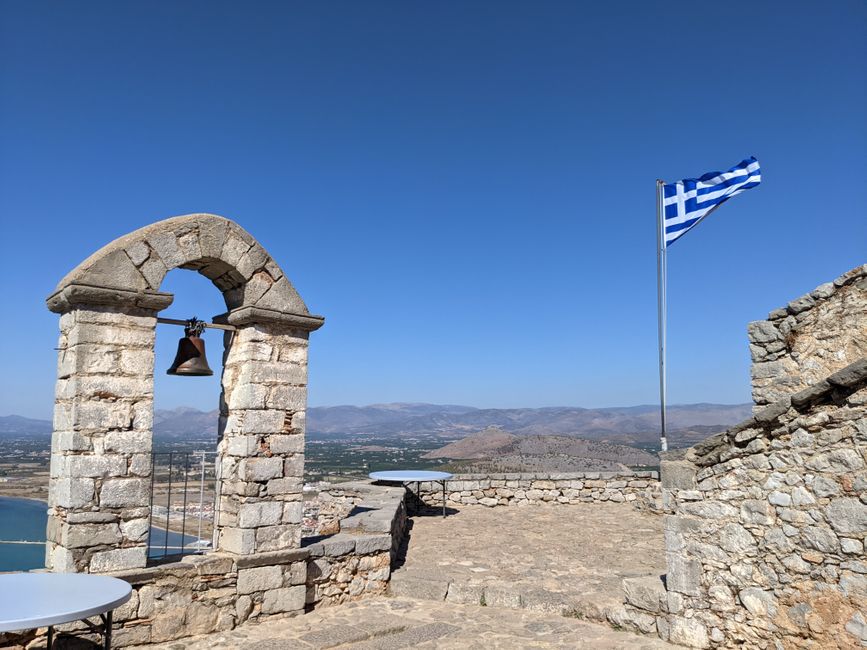
यात्रा के रिपोर्ट ग्रीस के ह बा।
